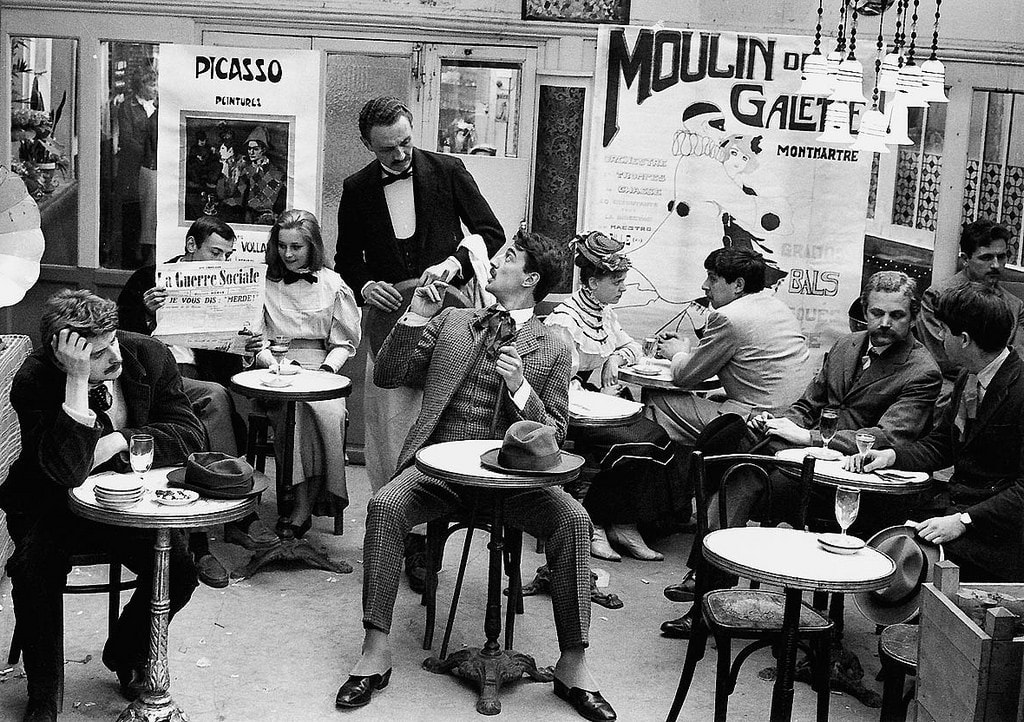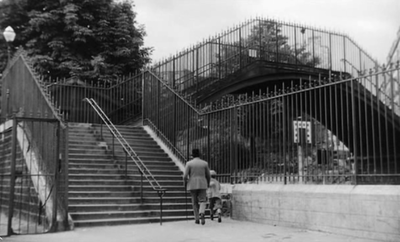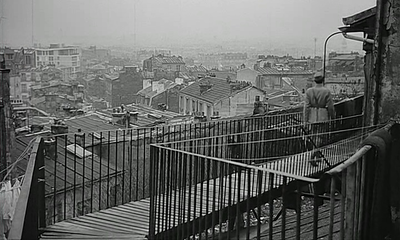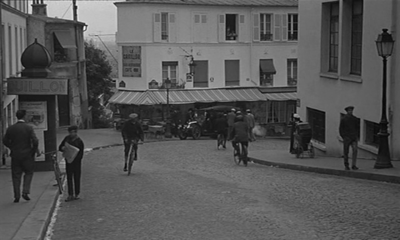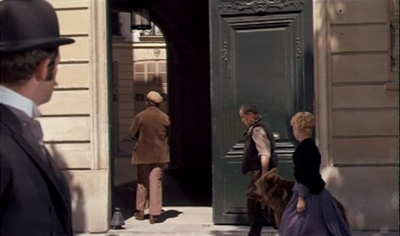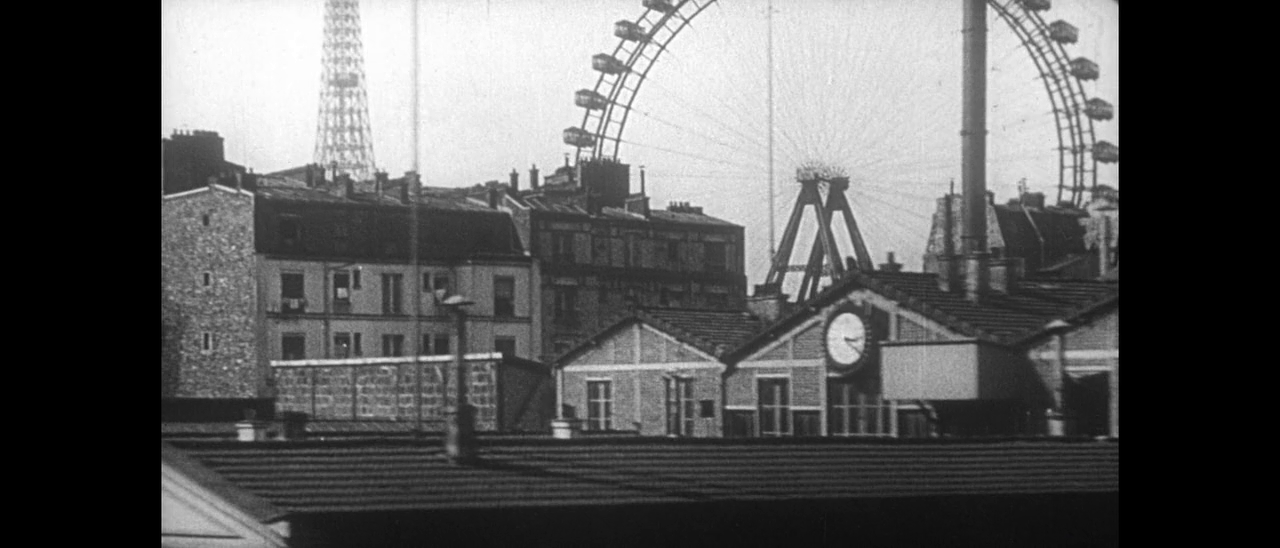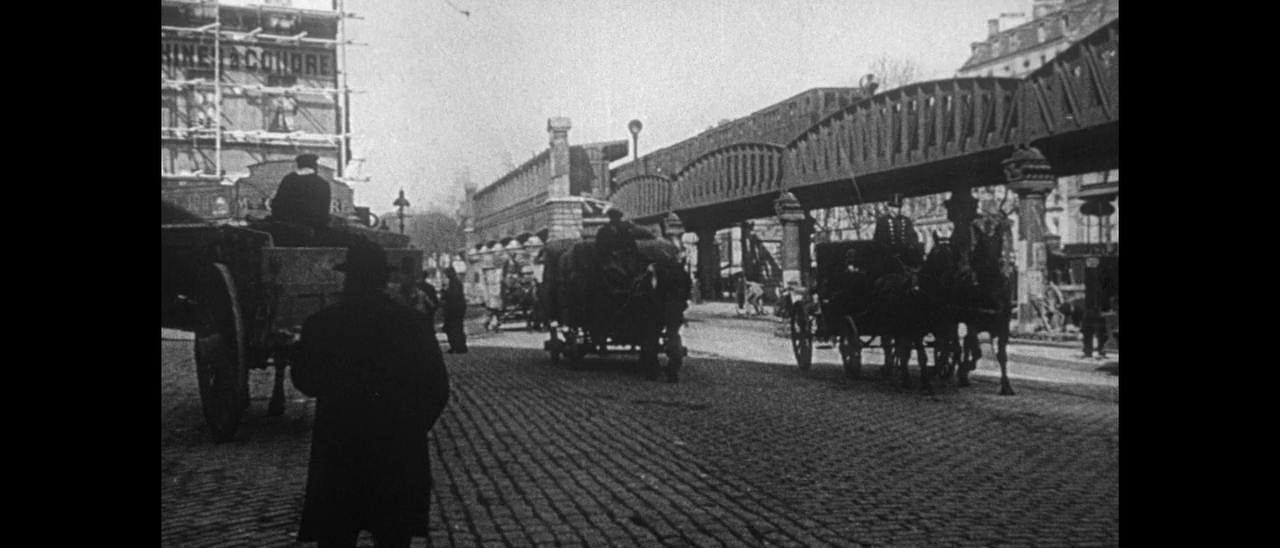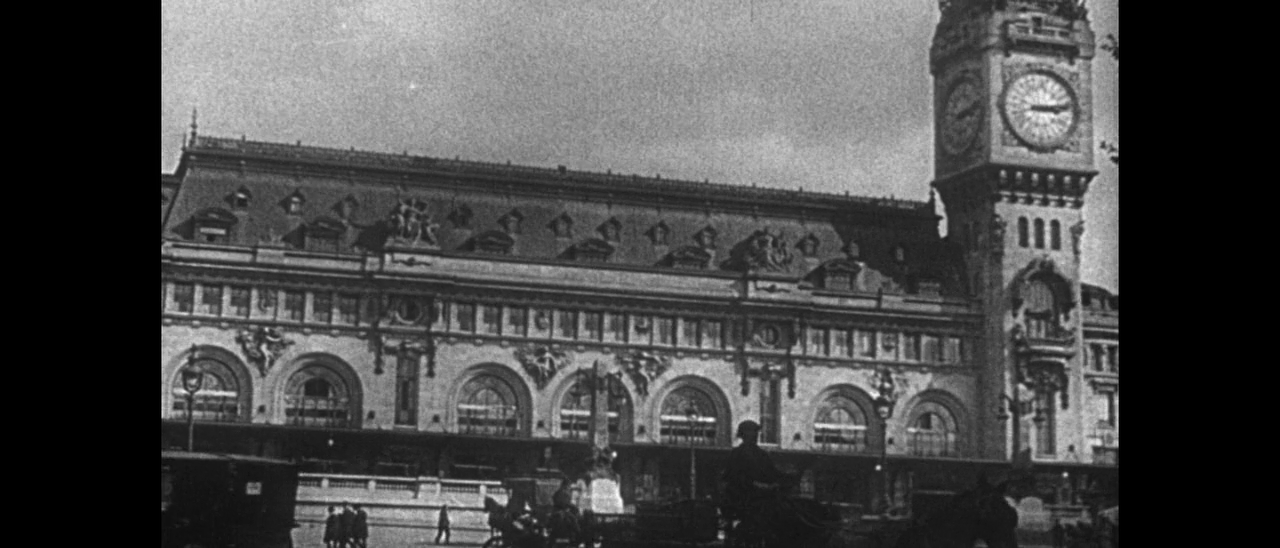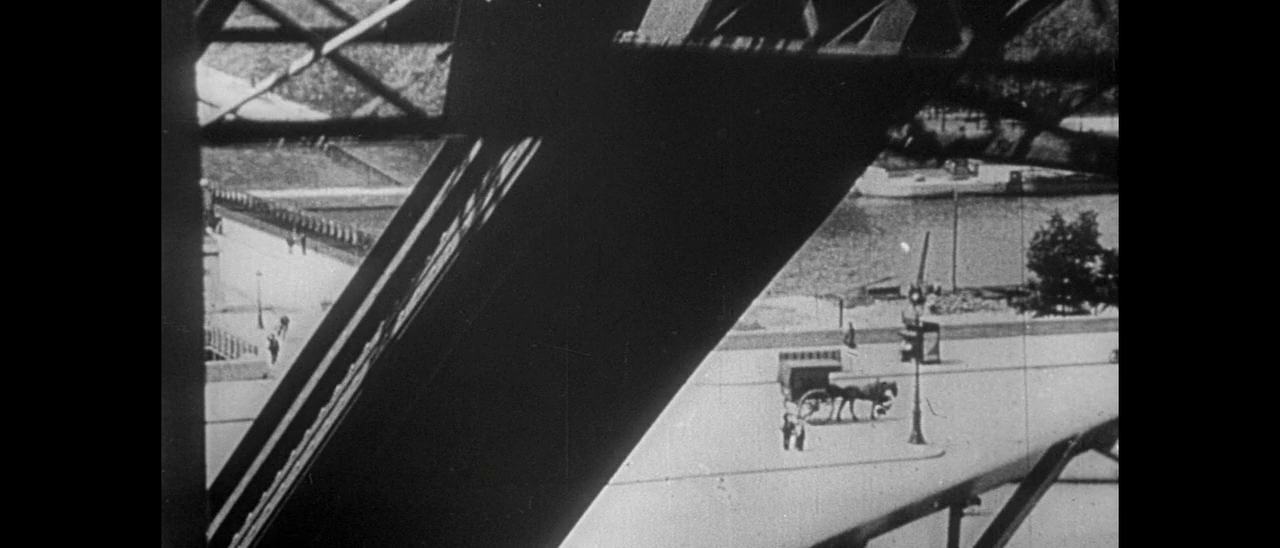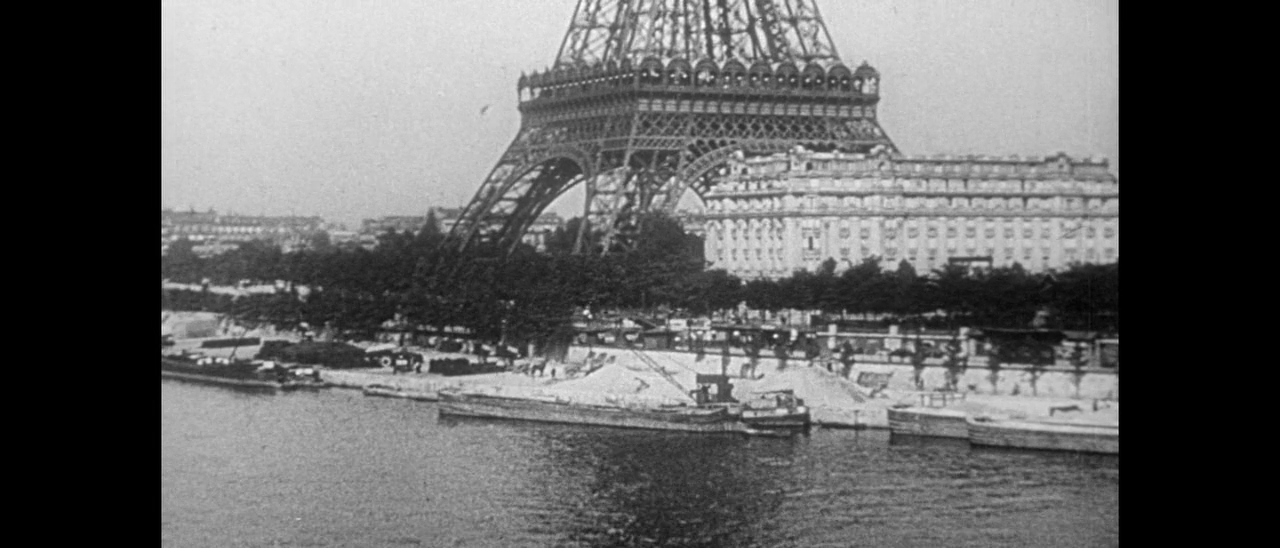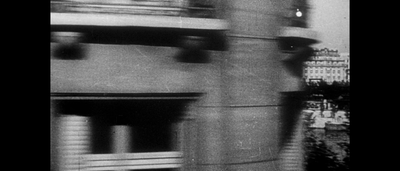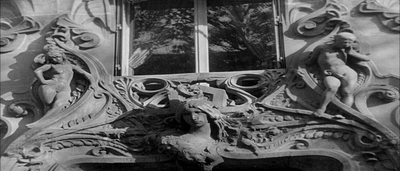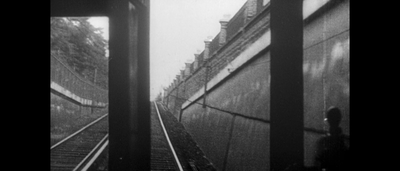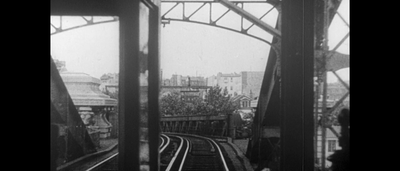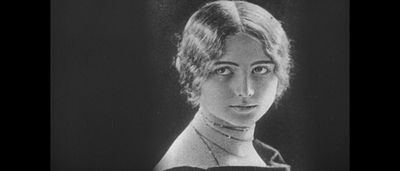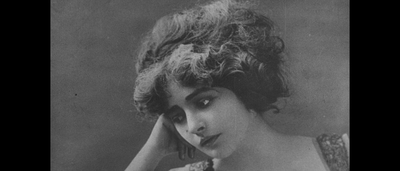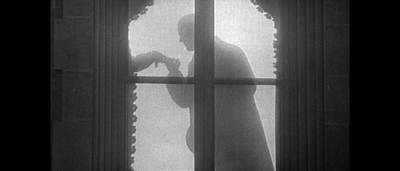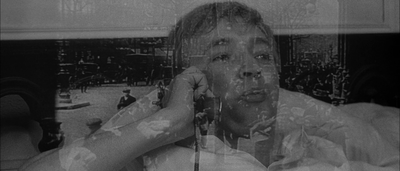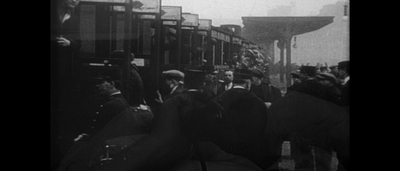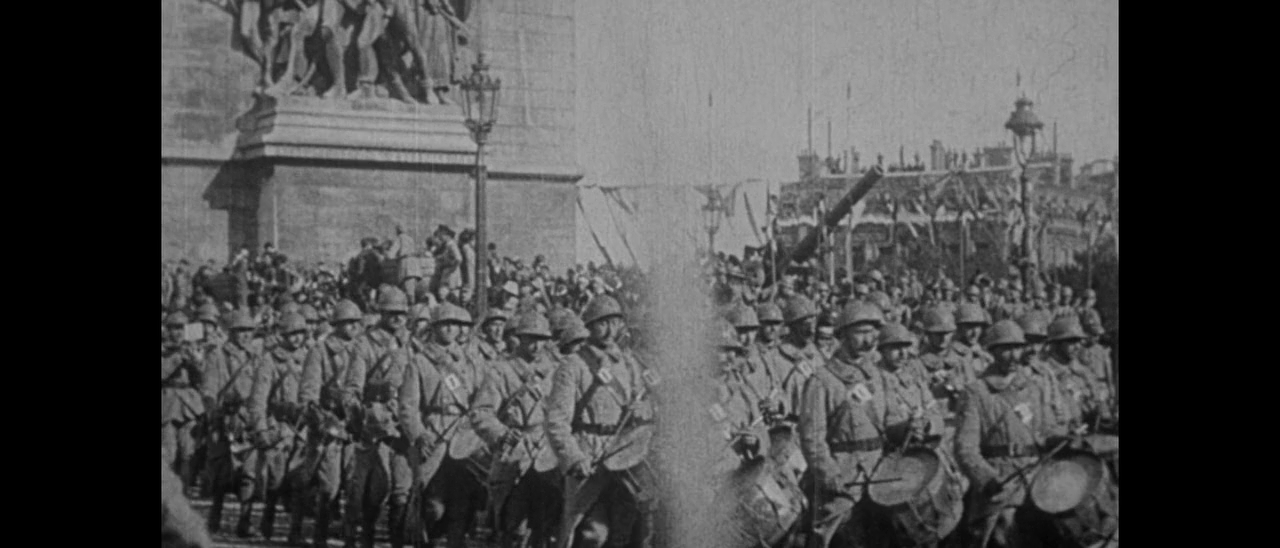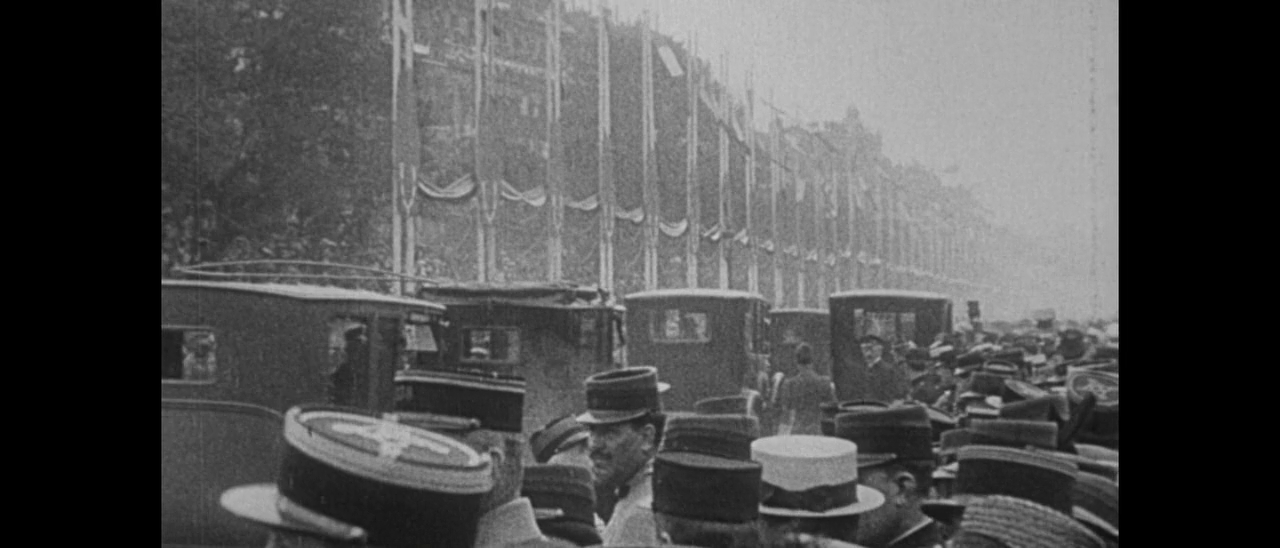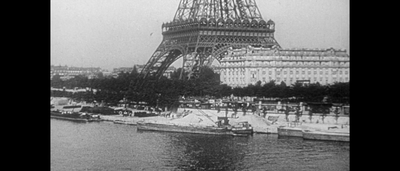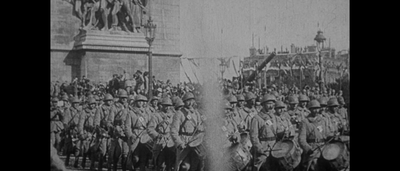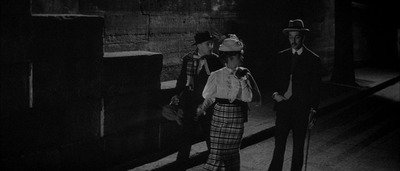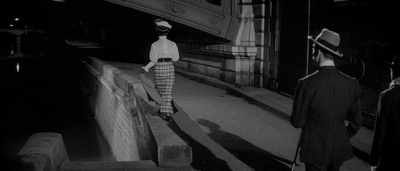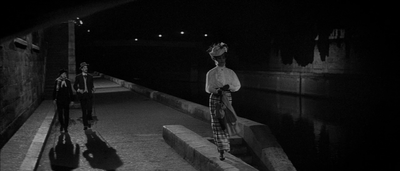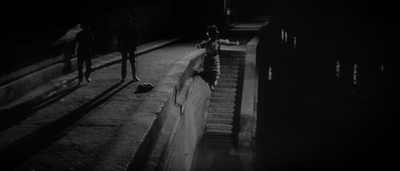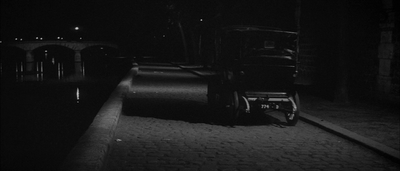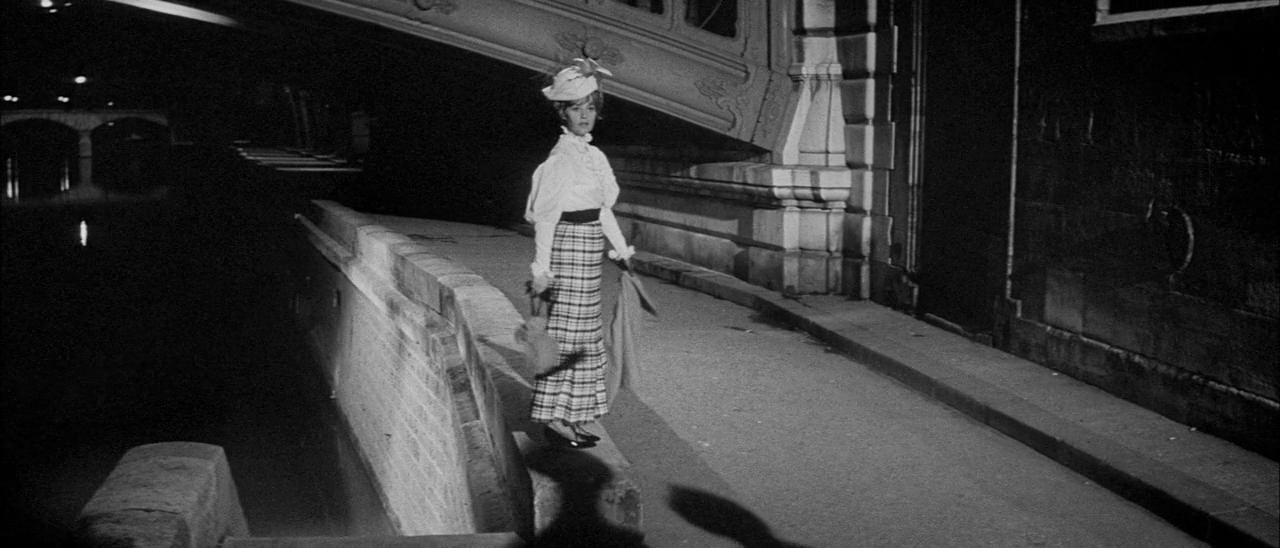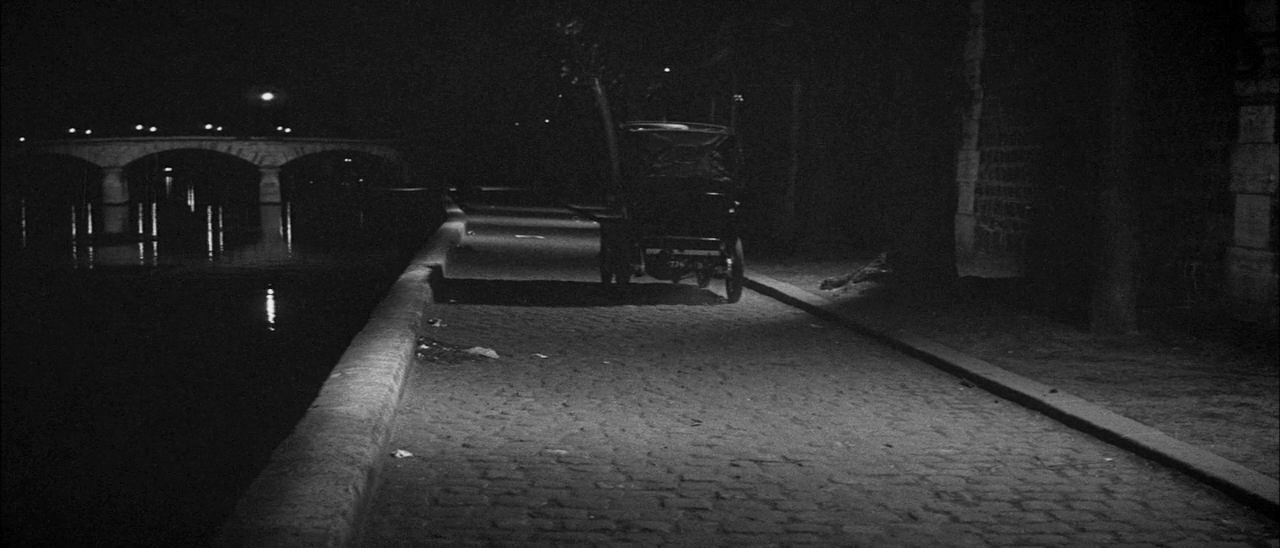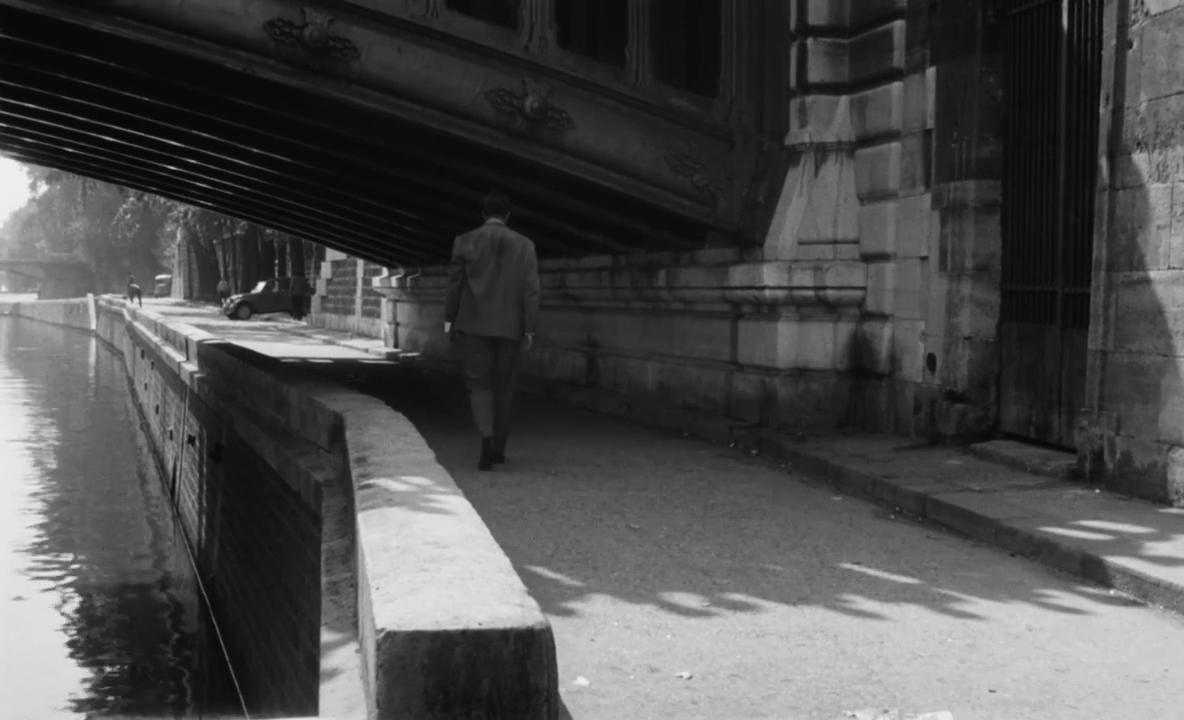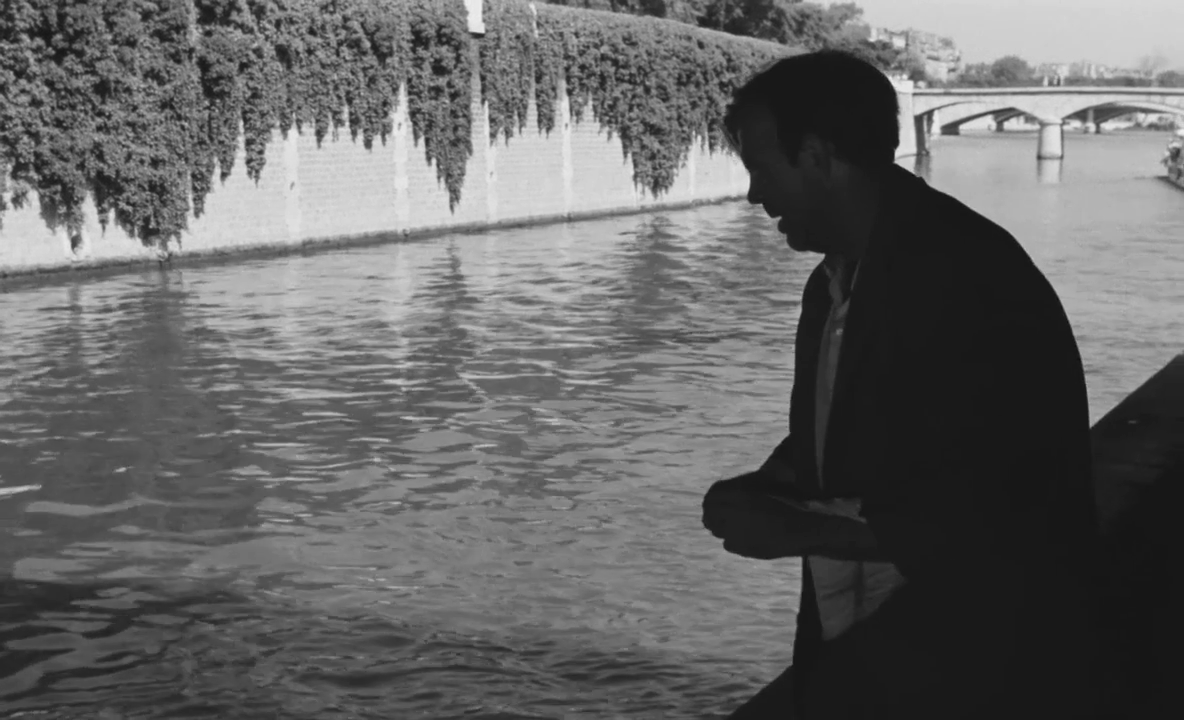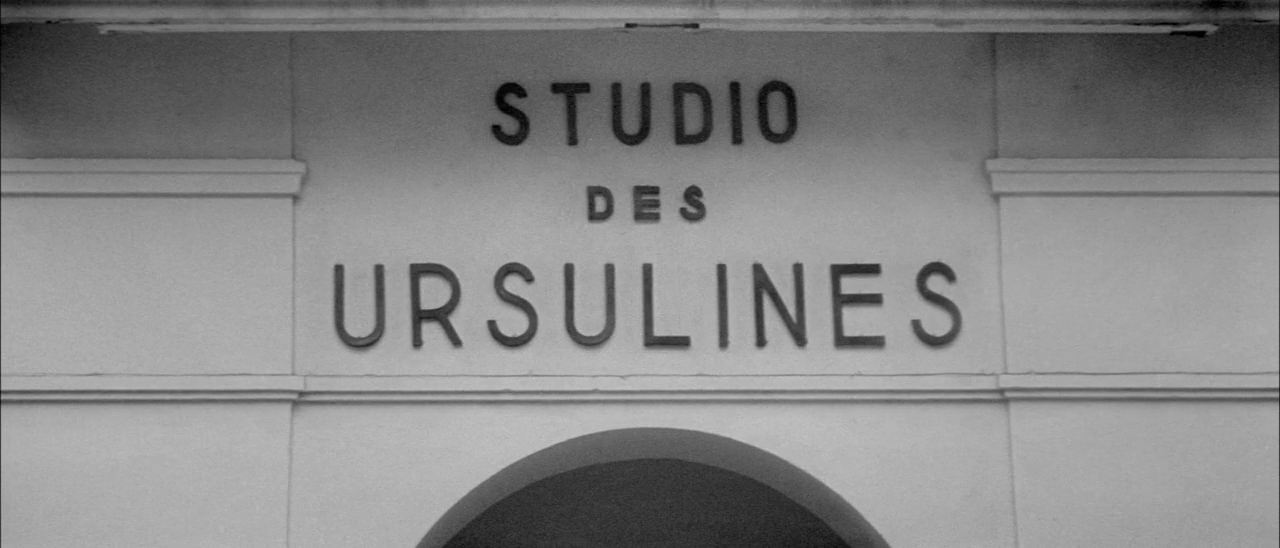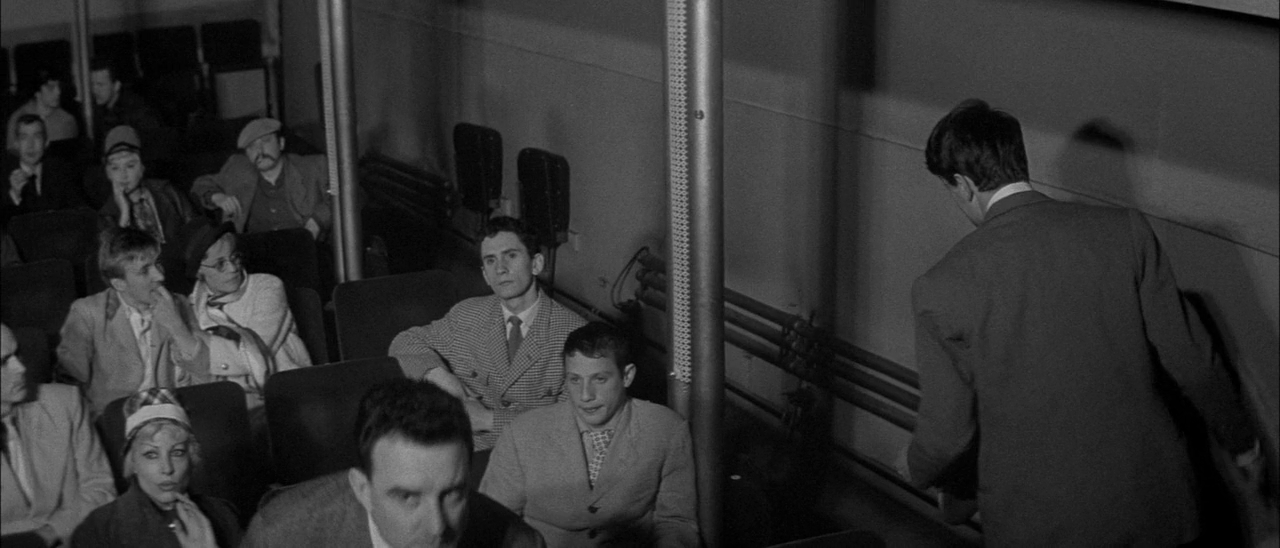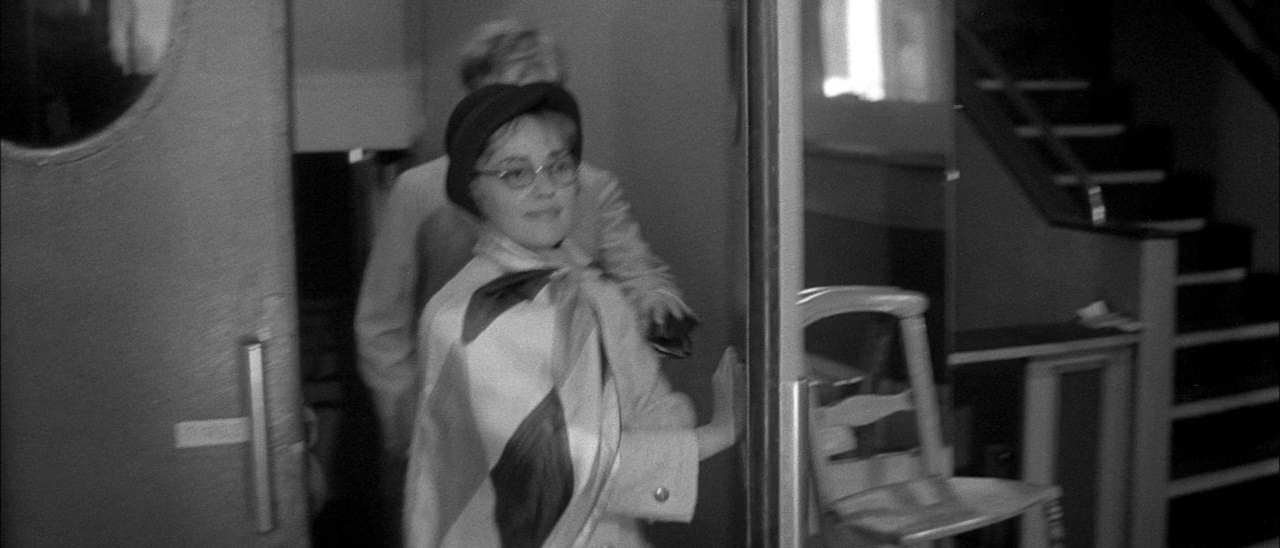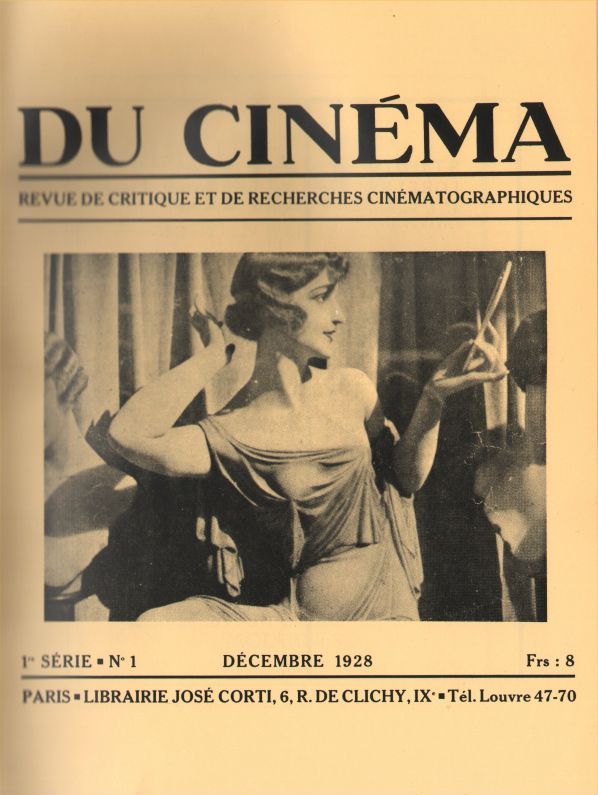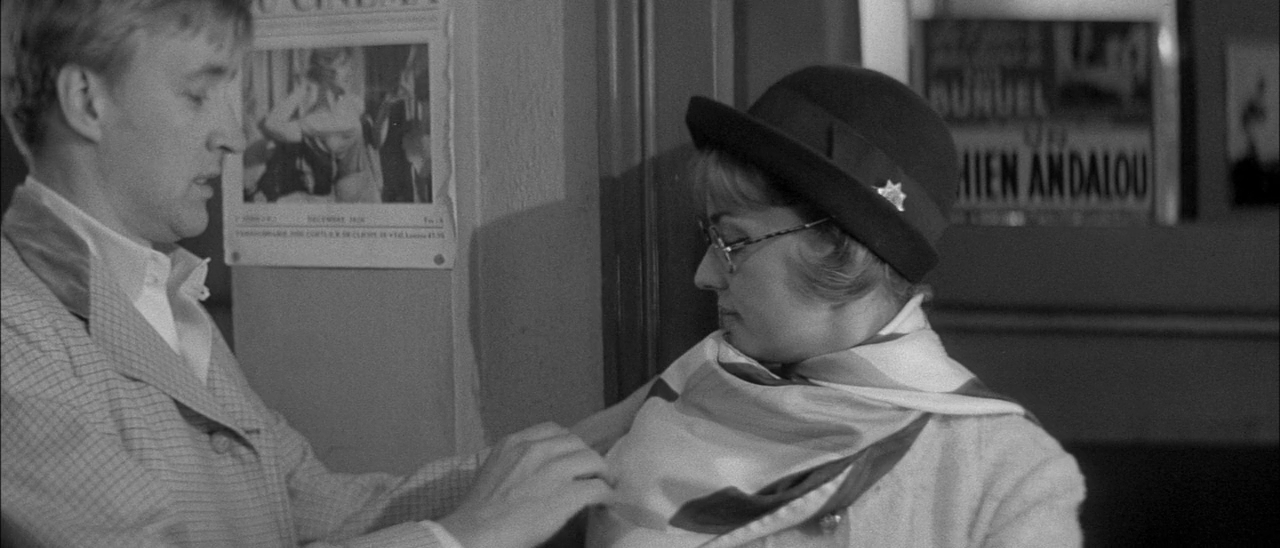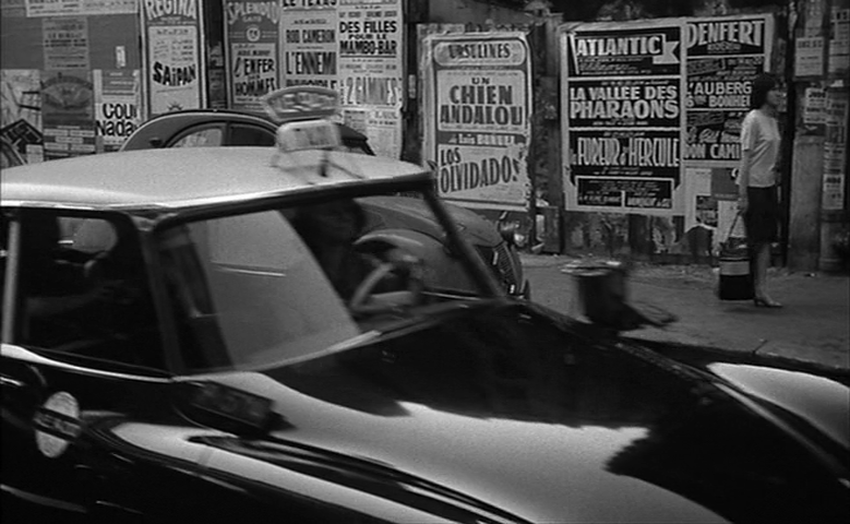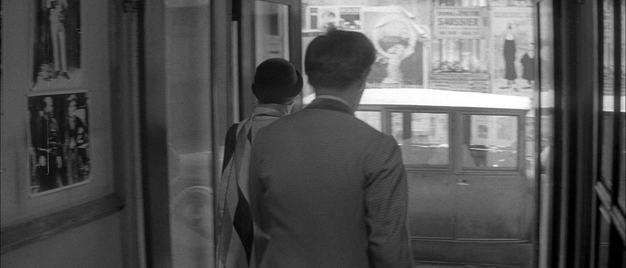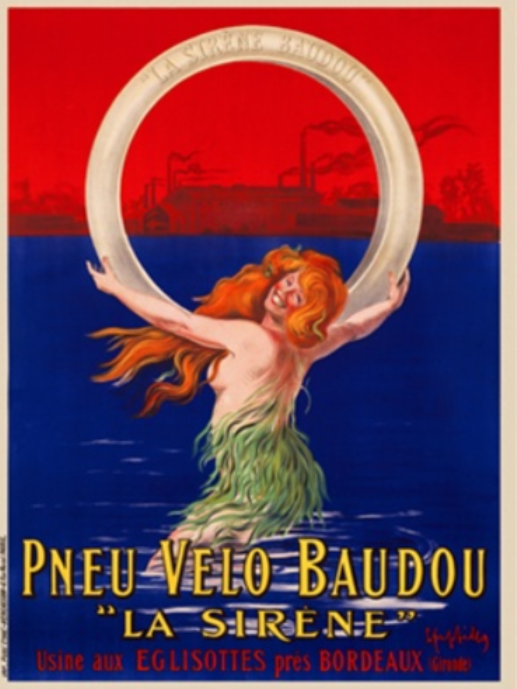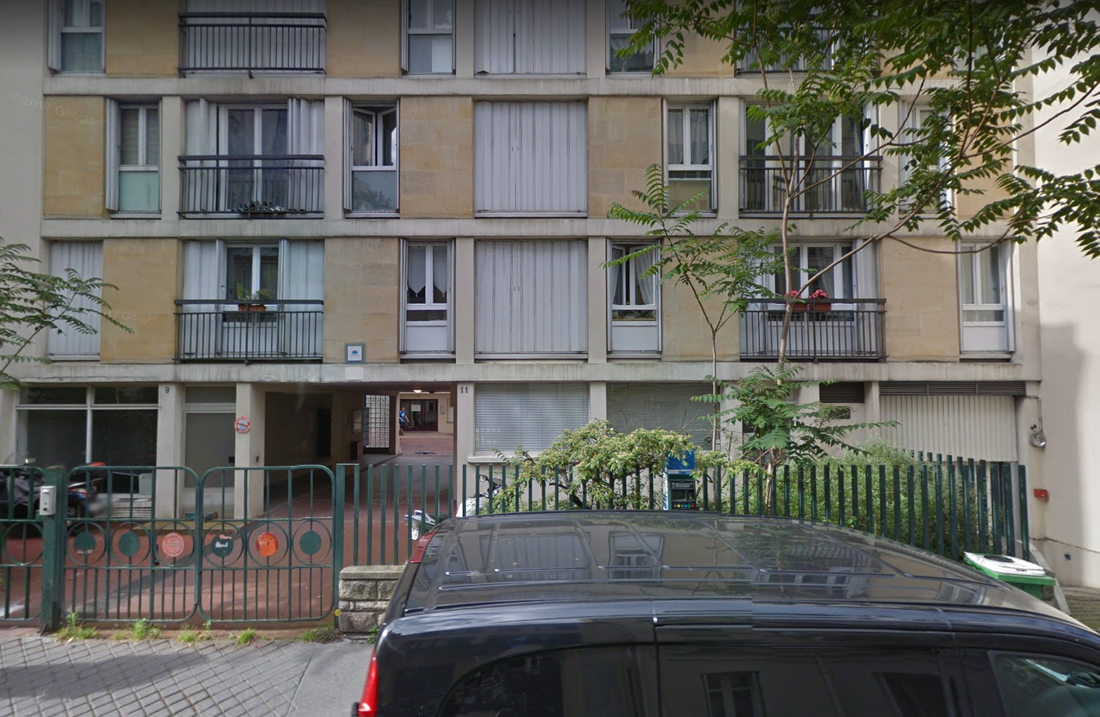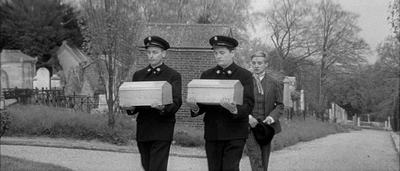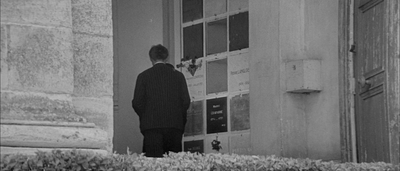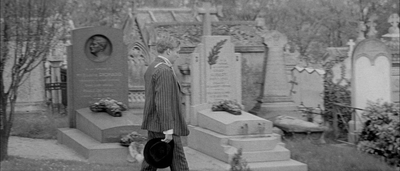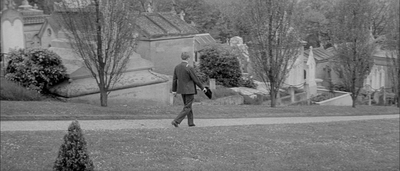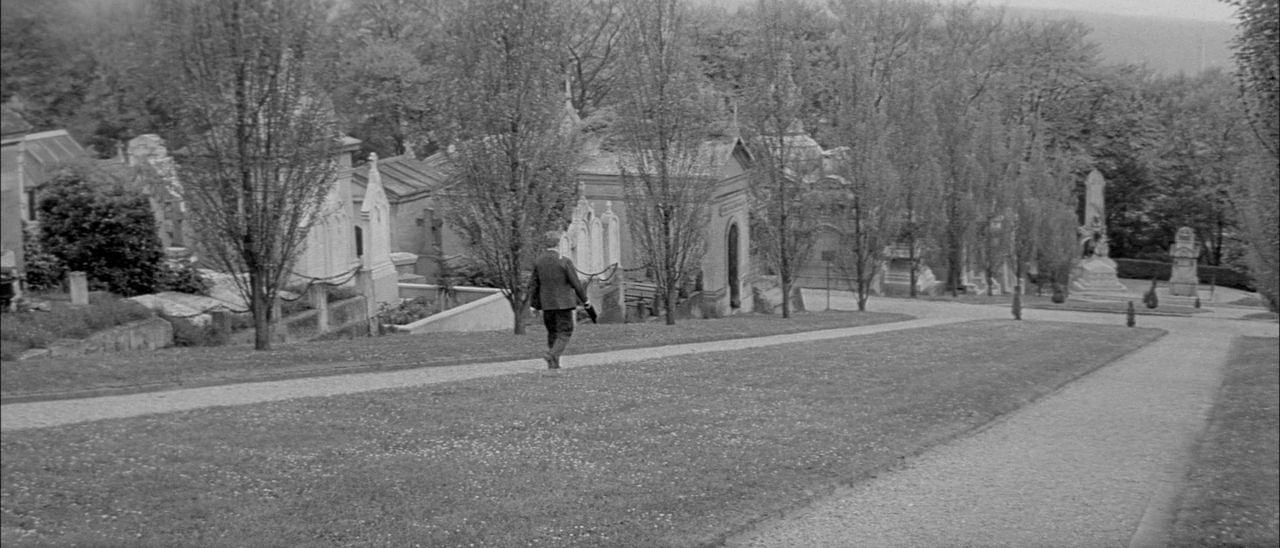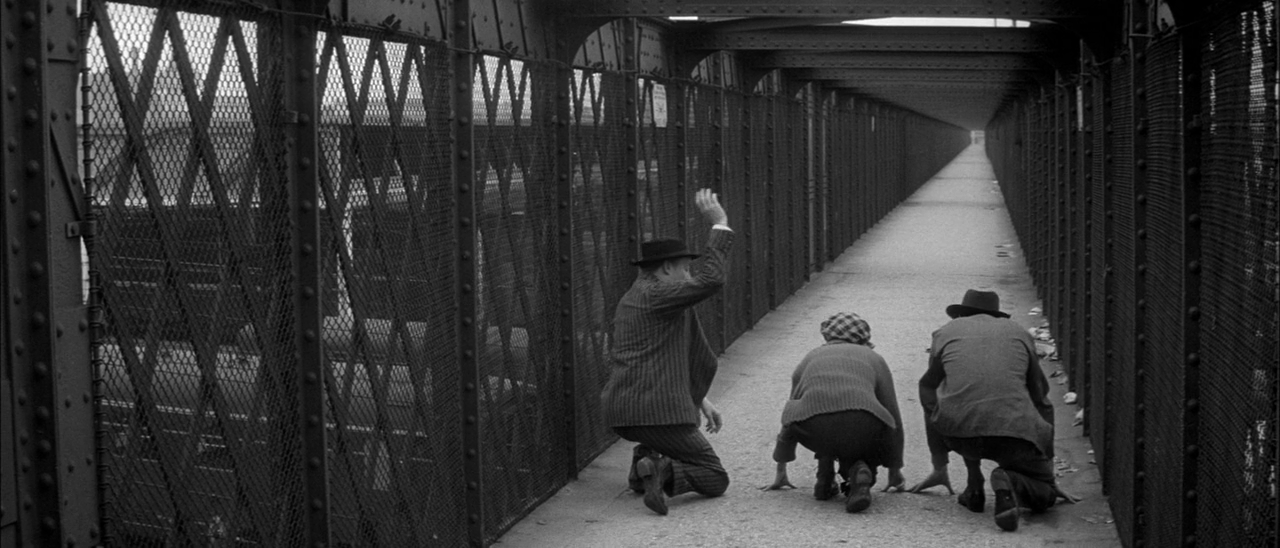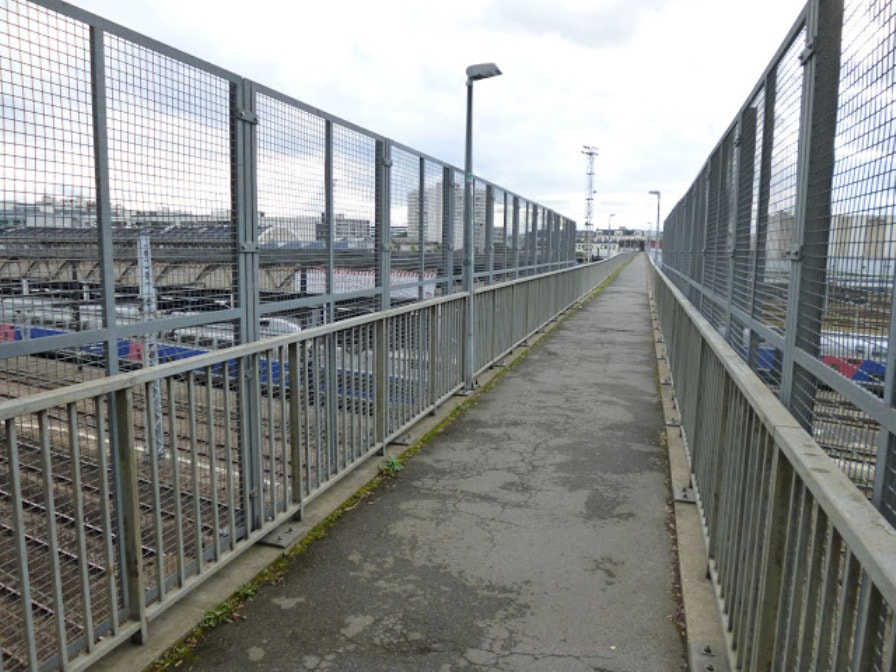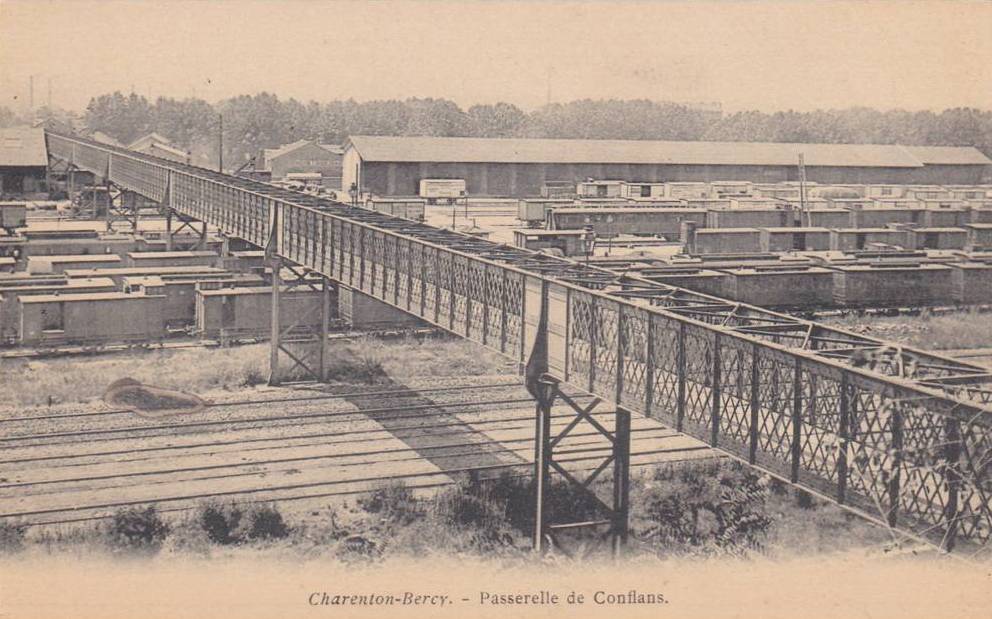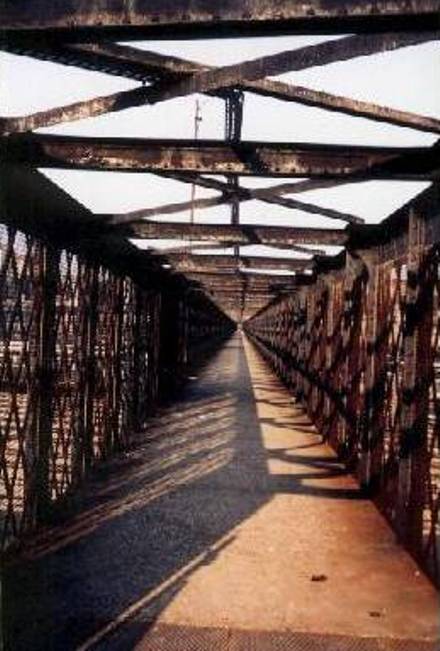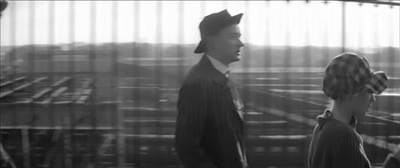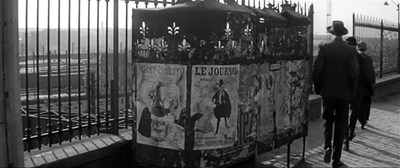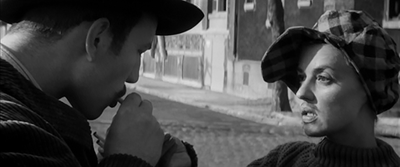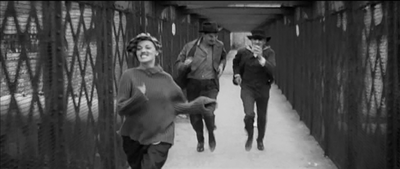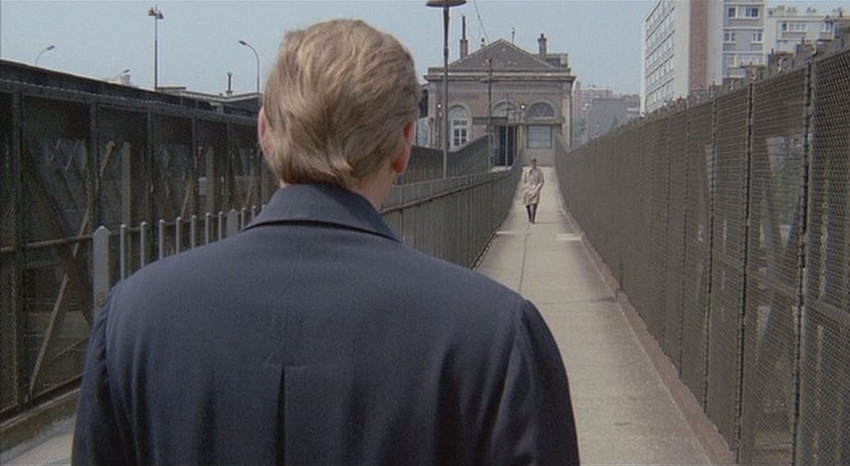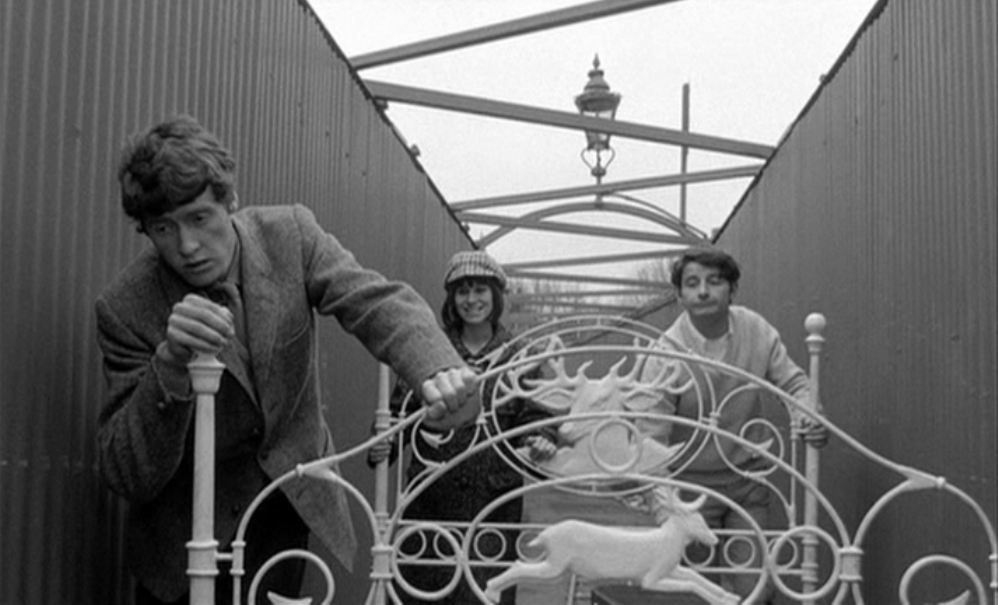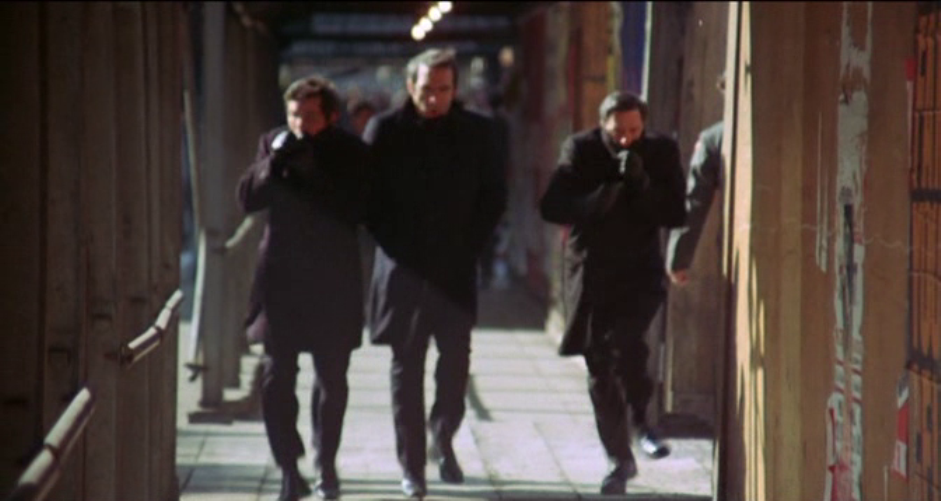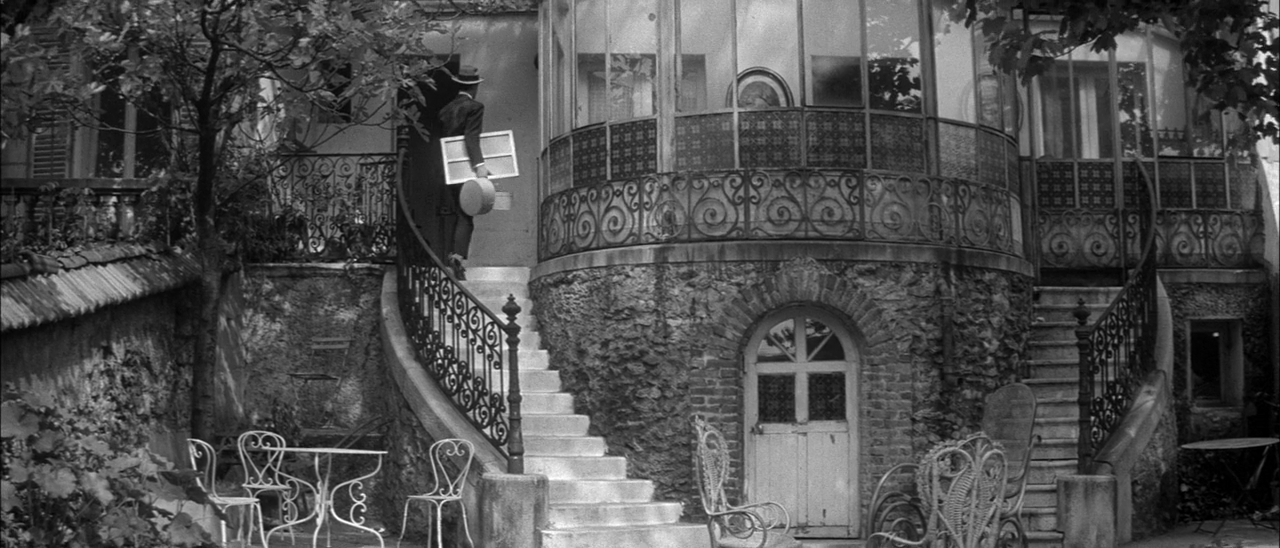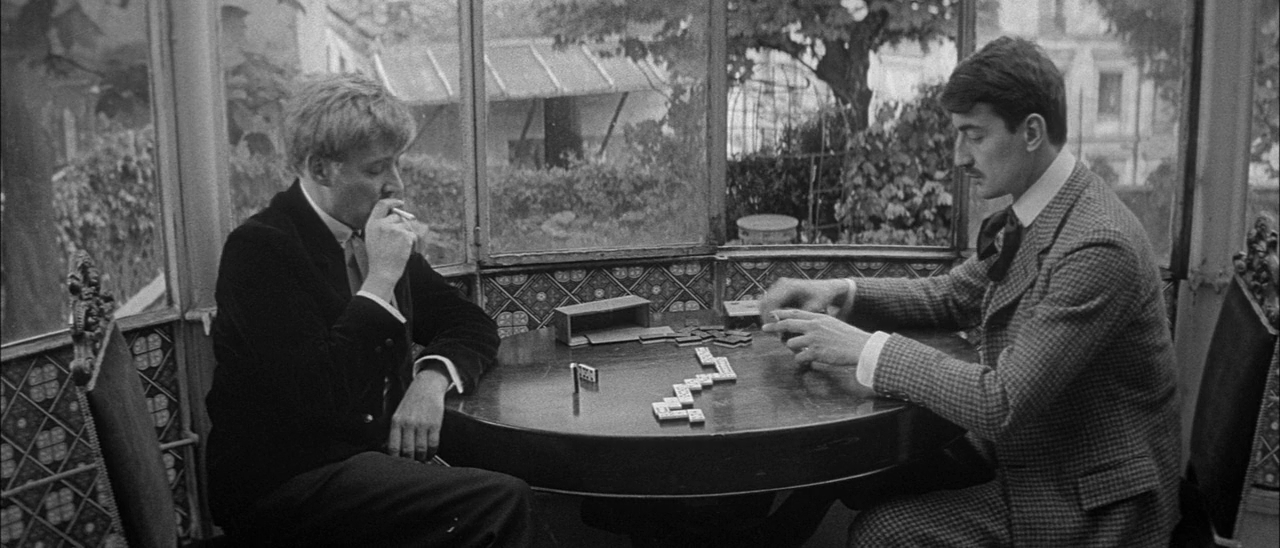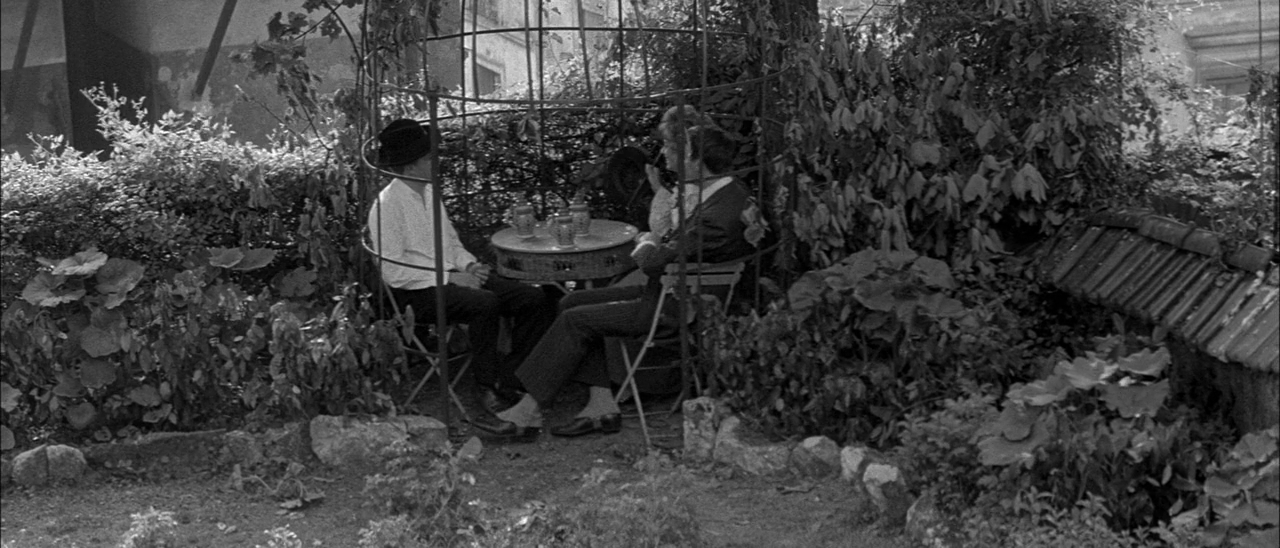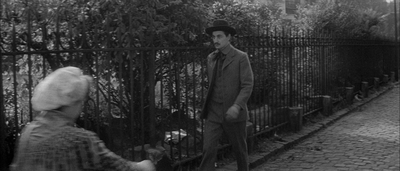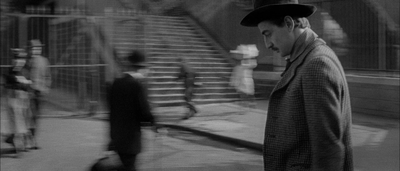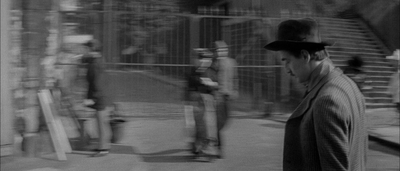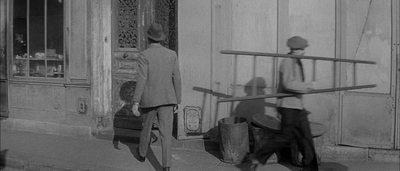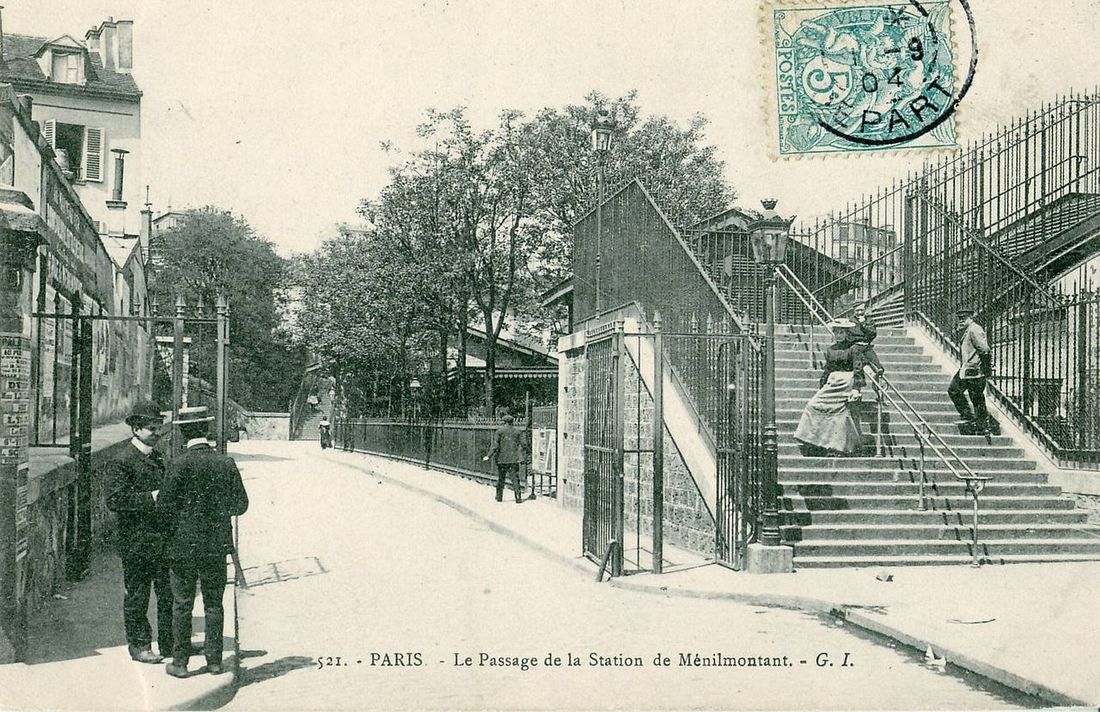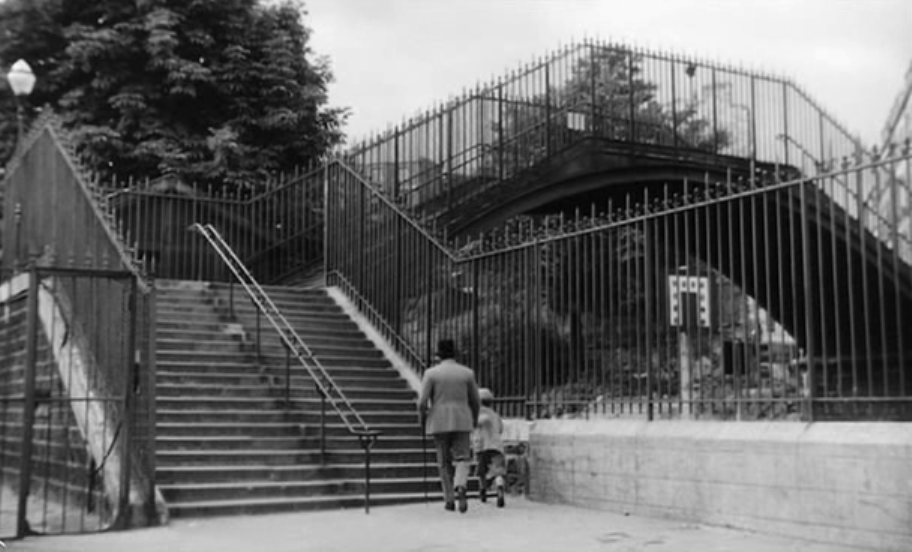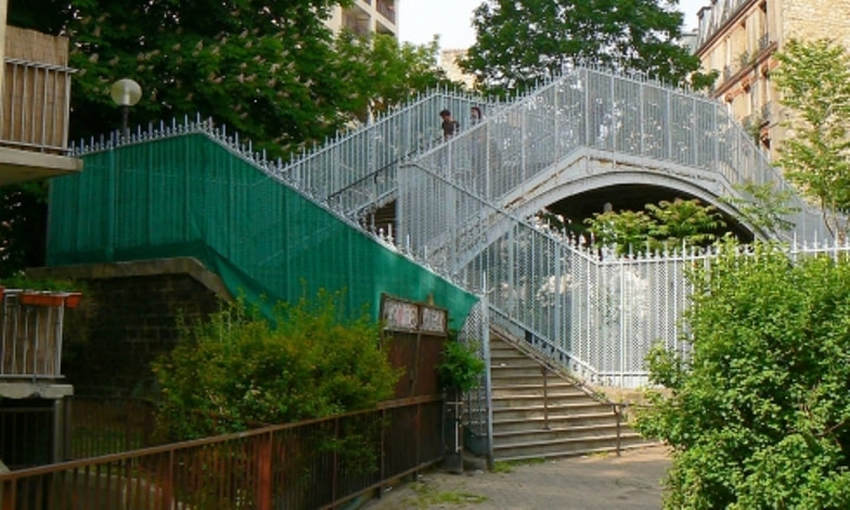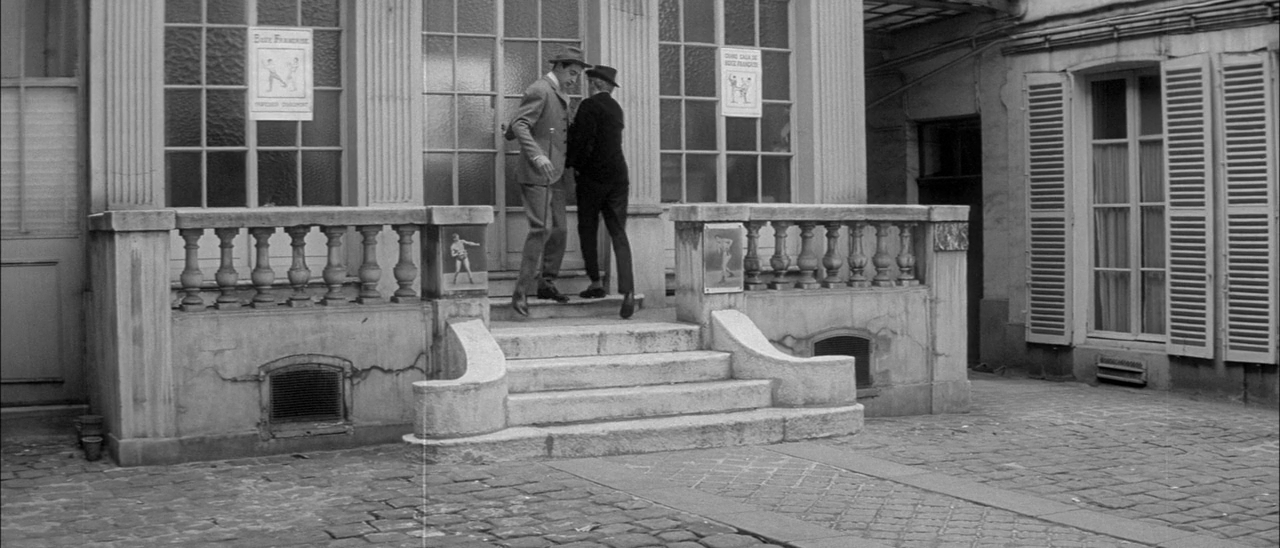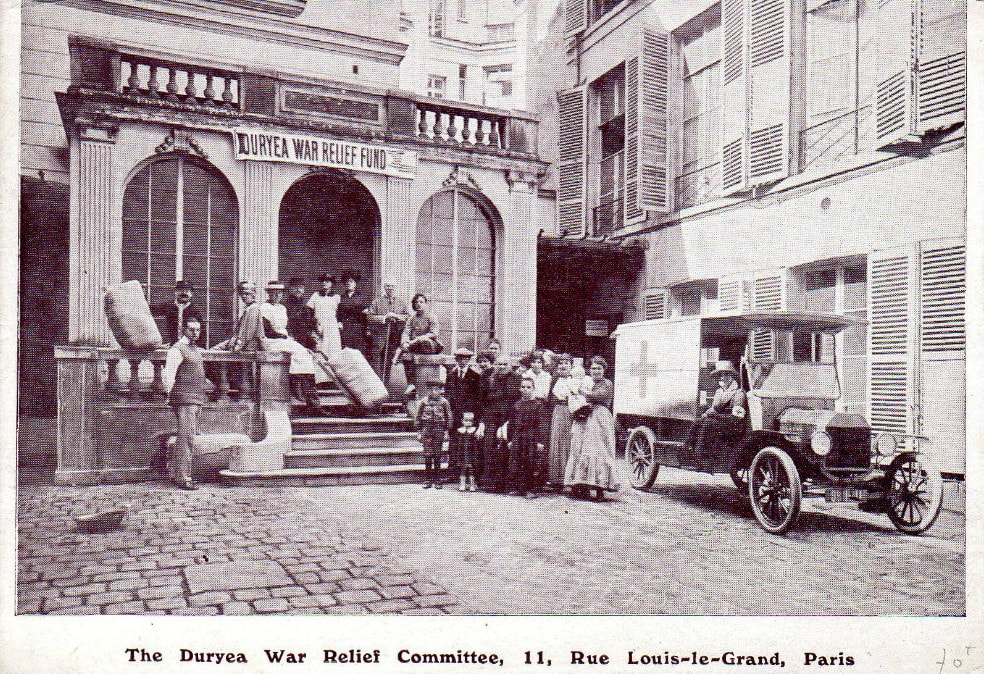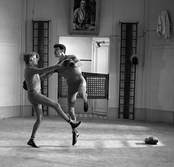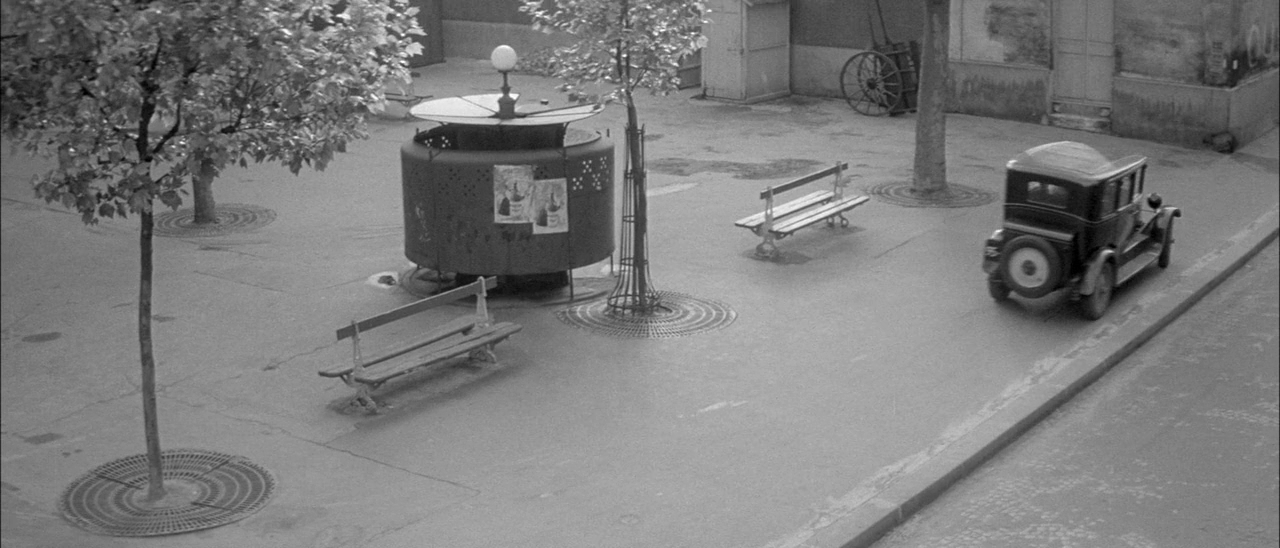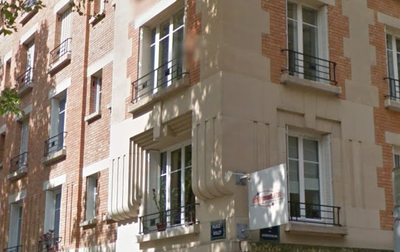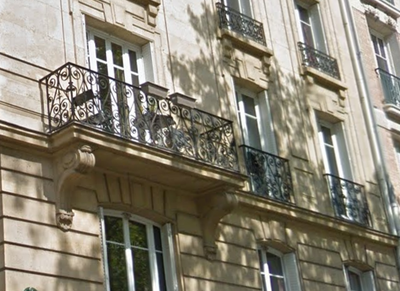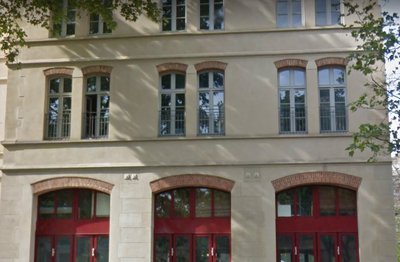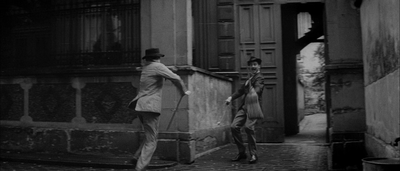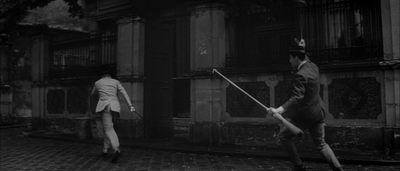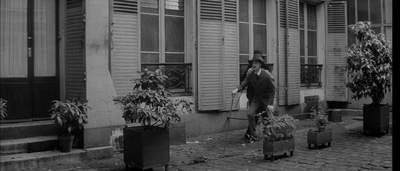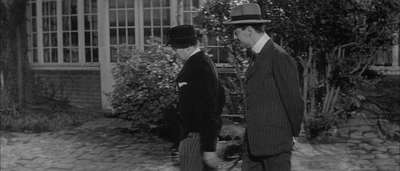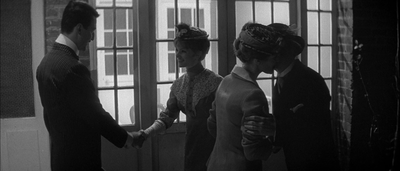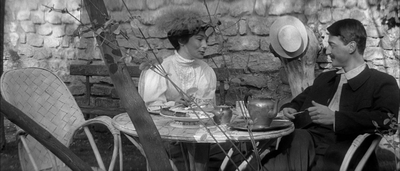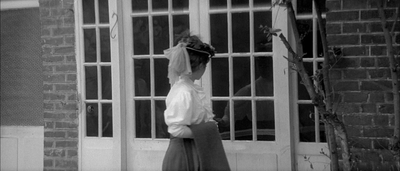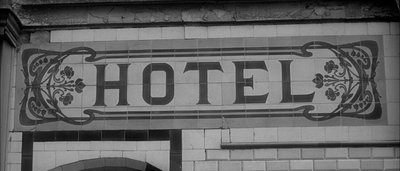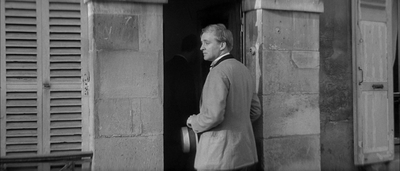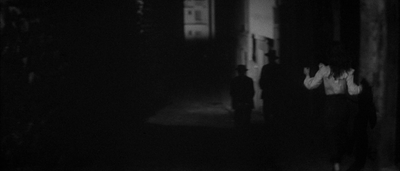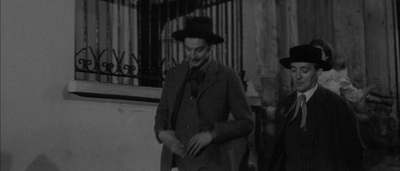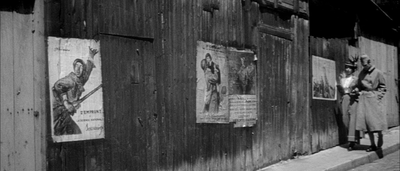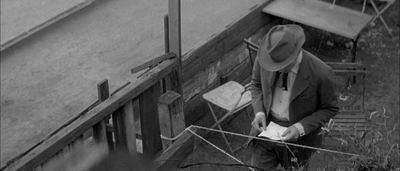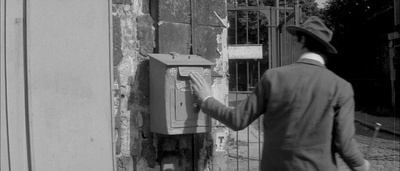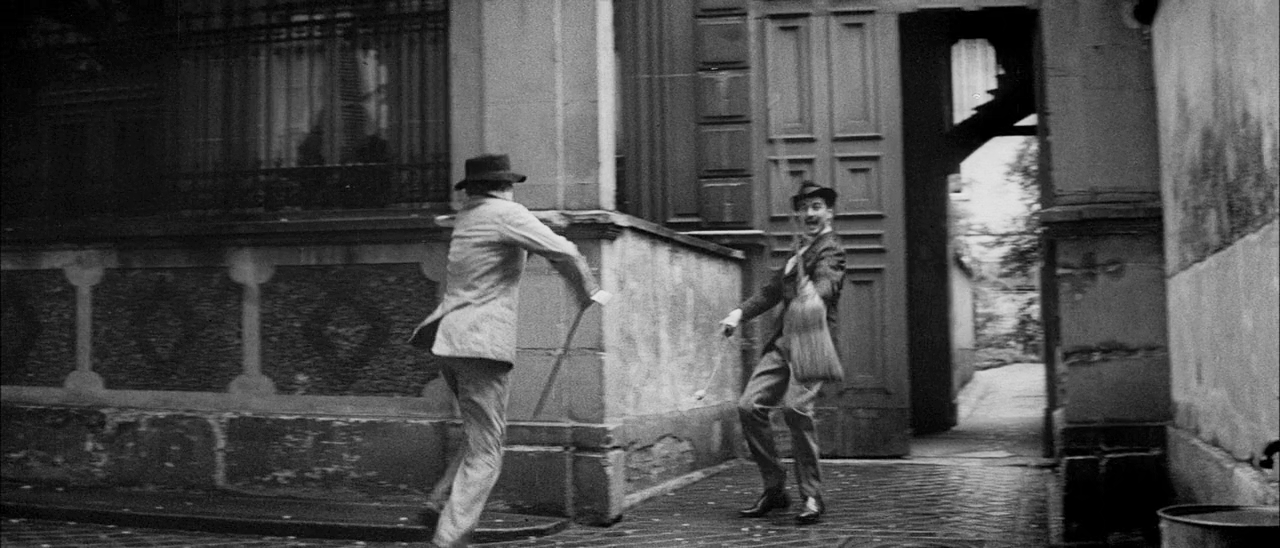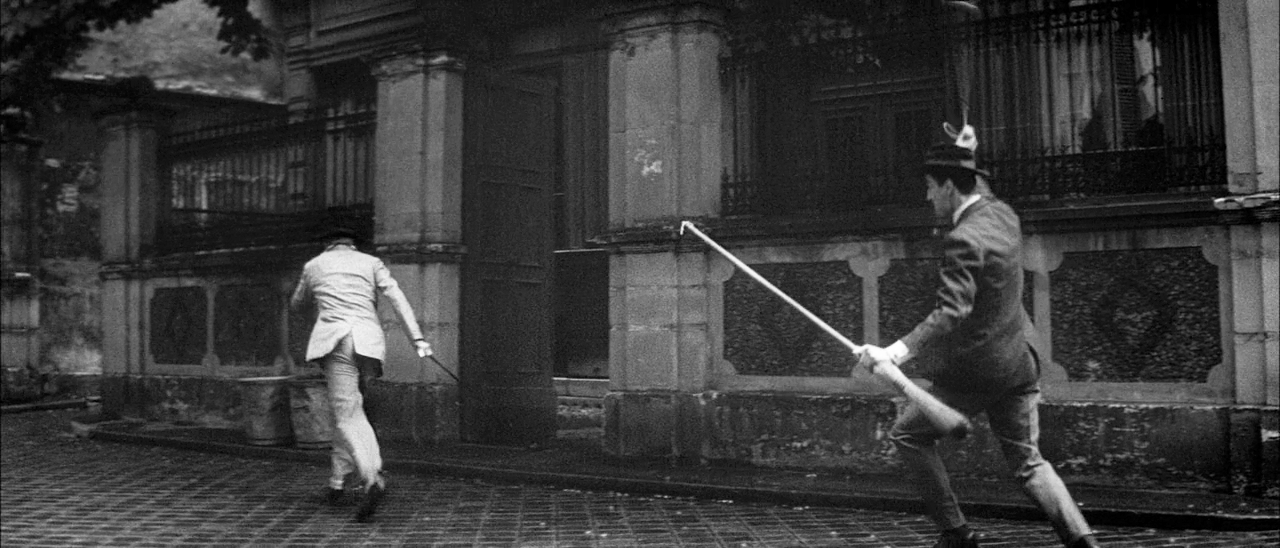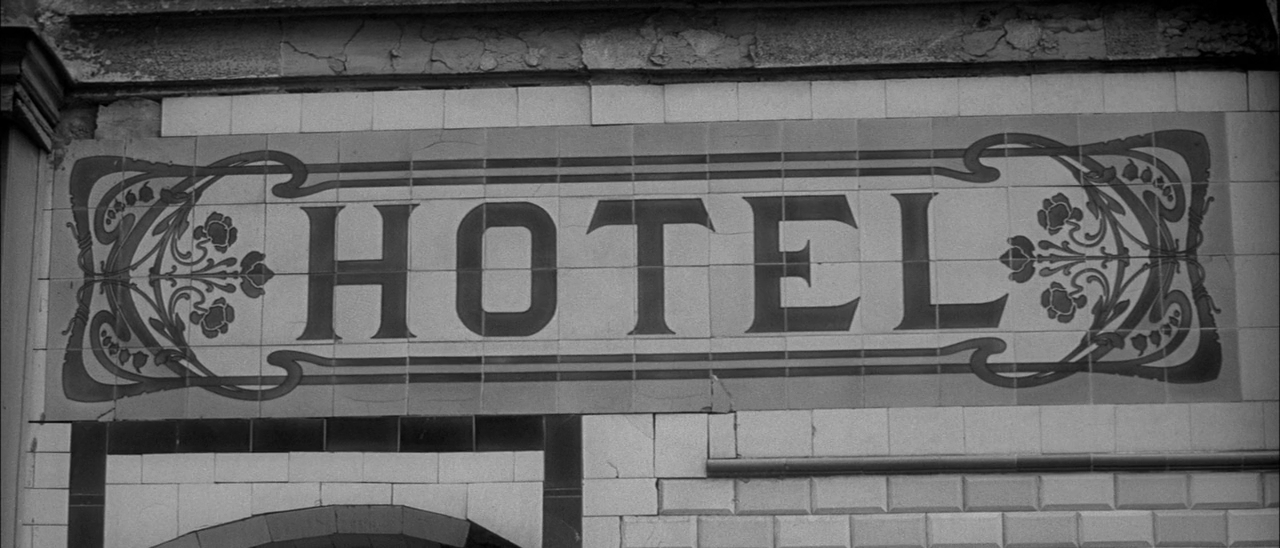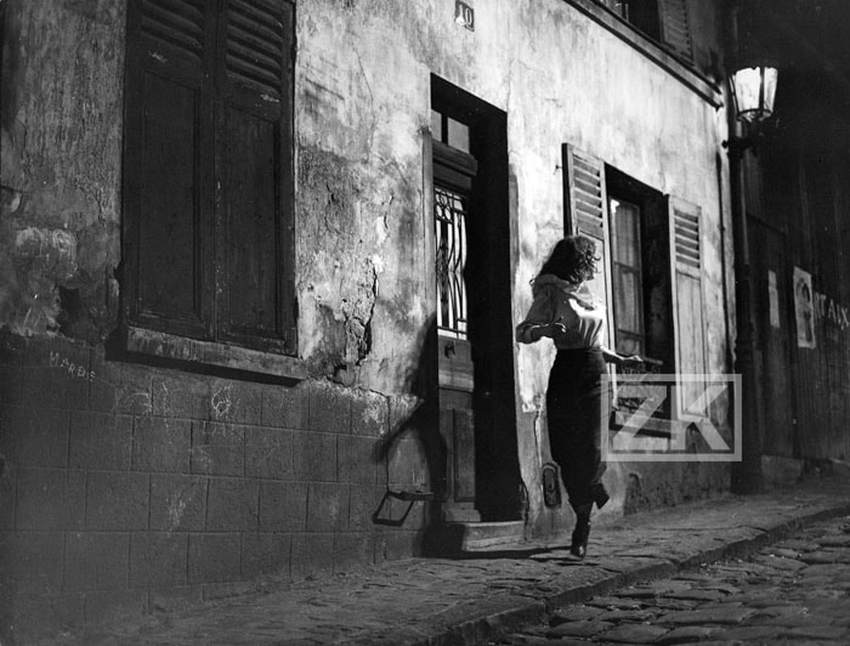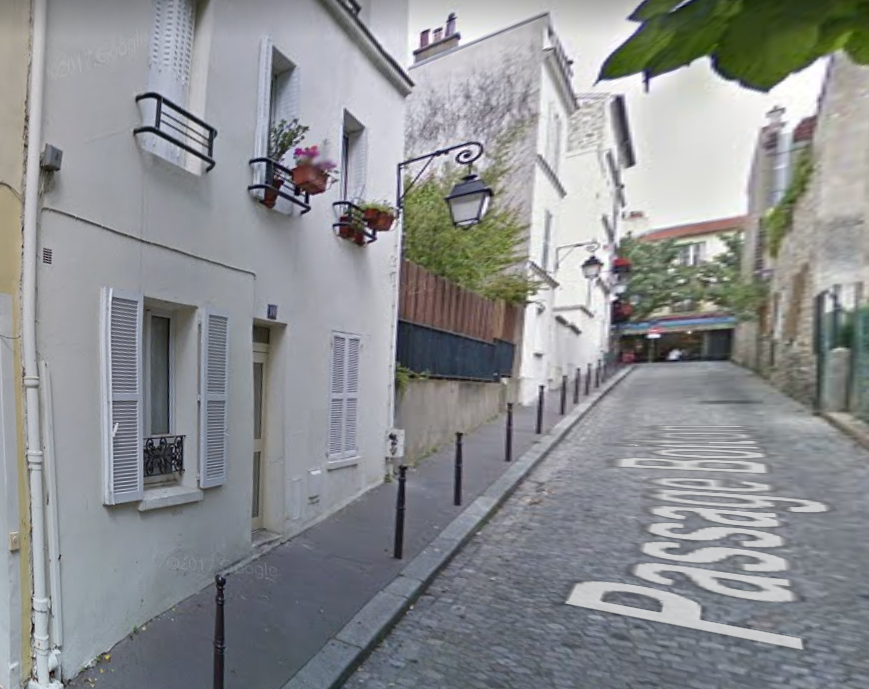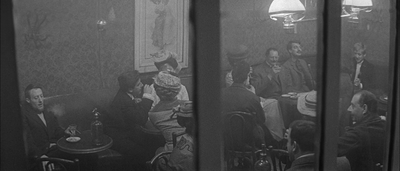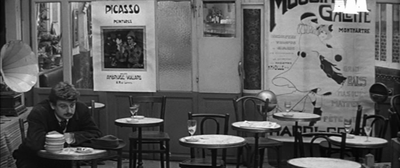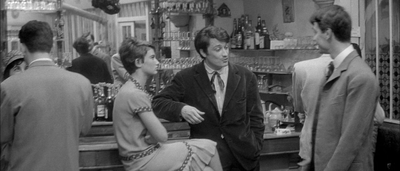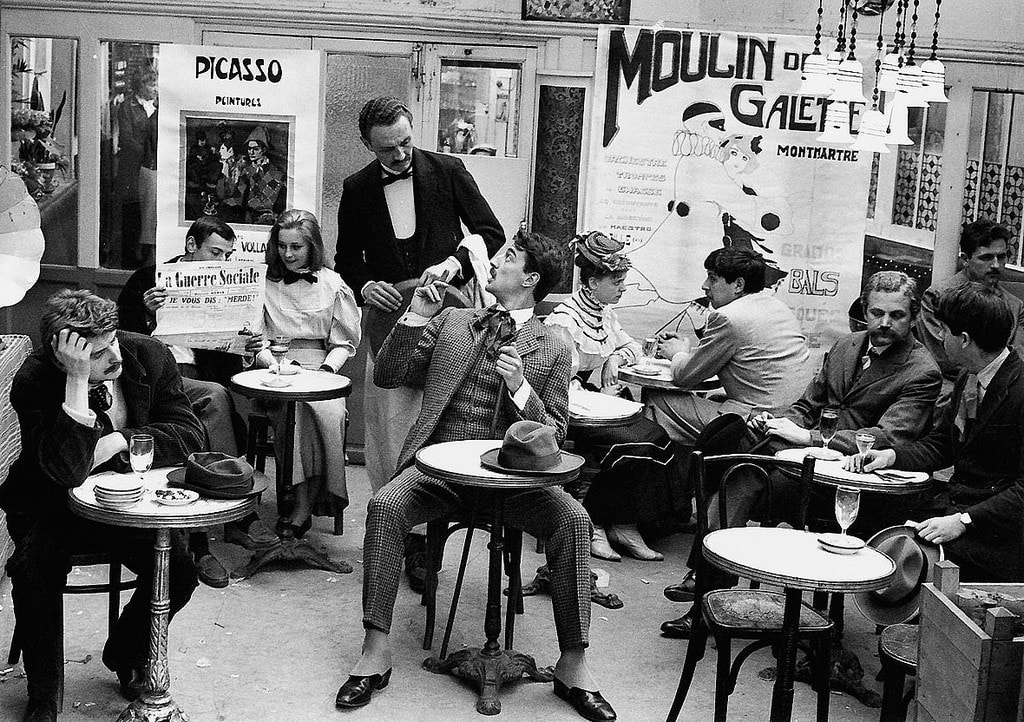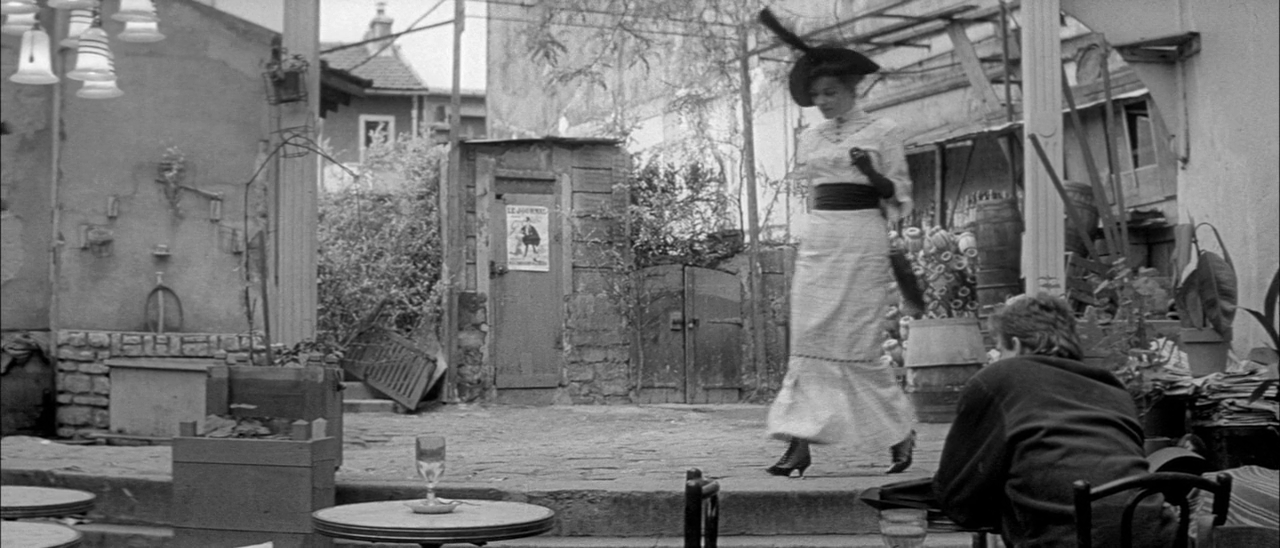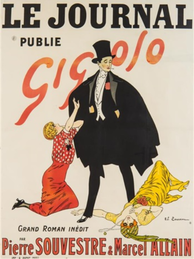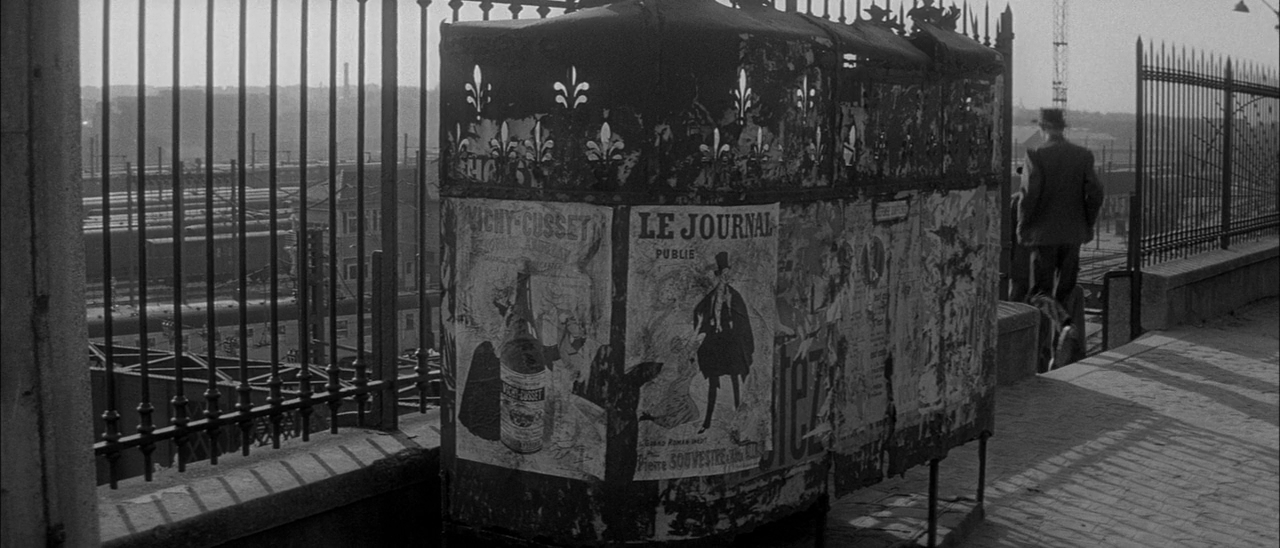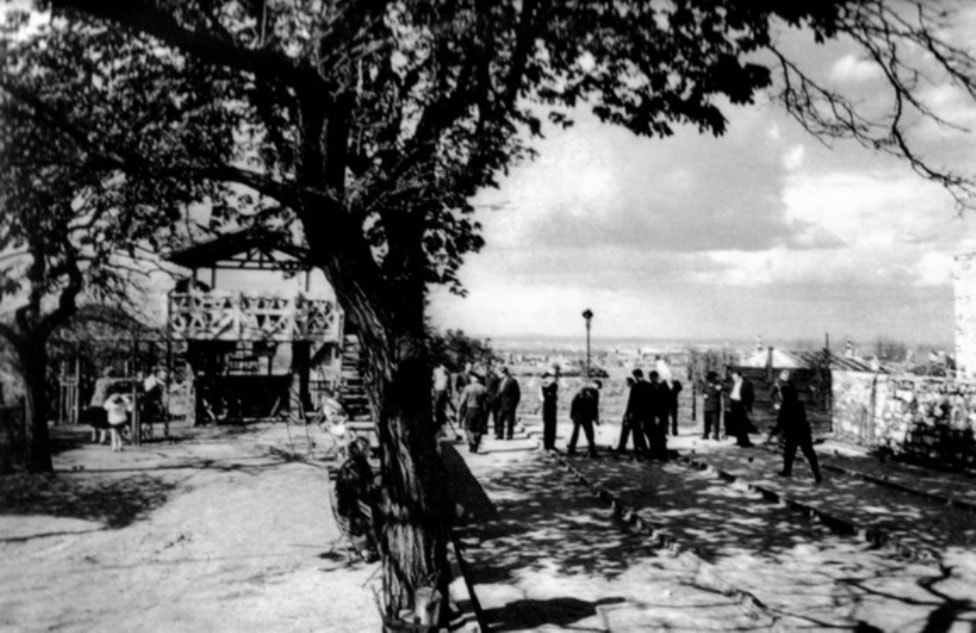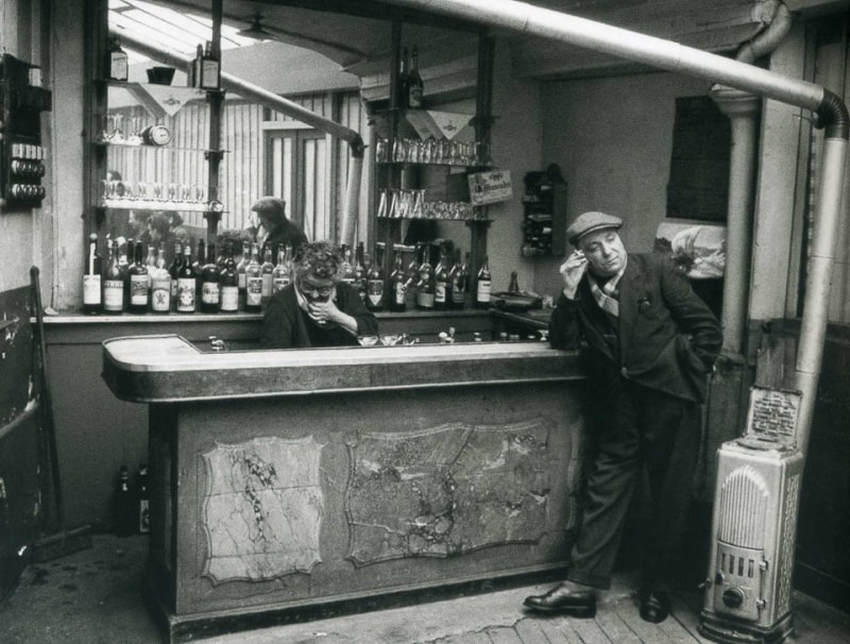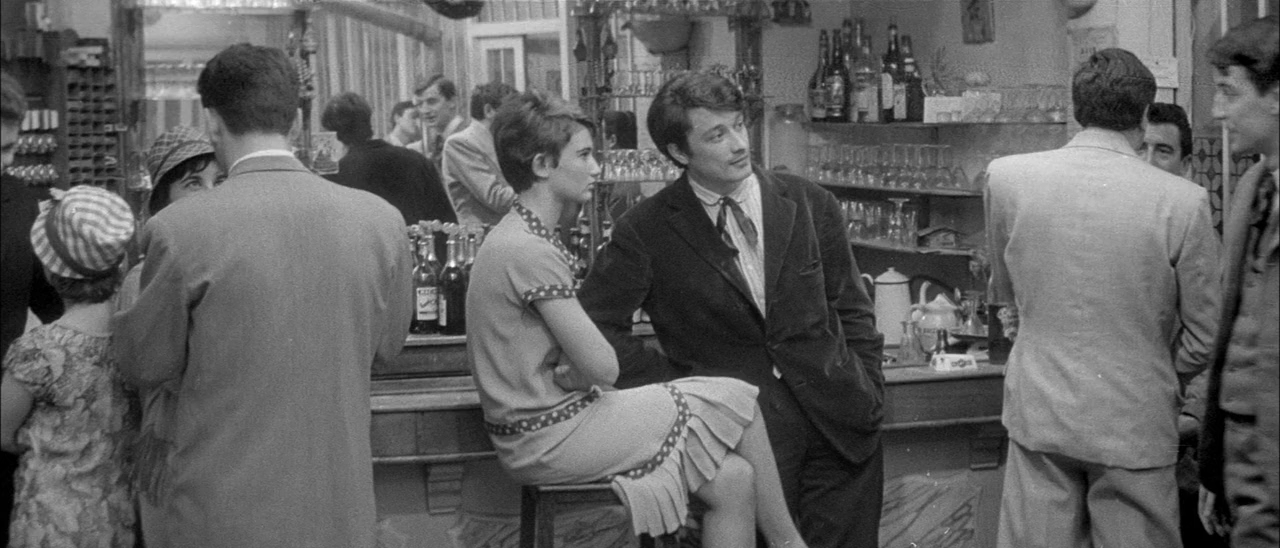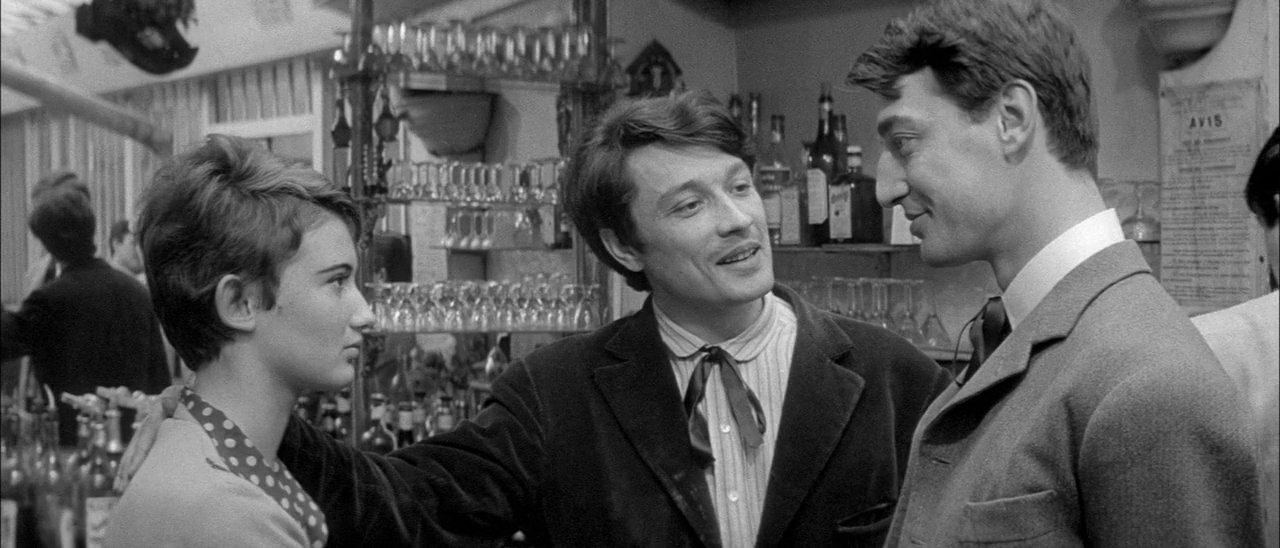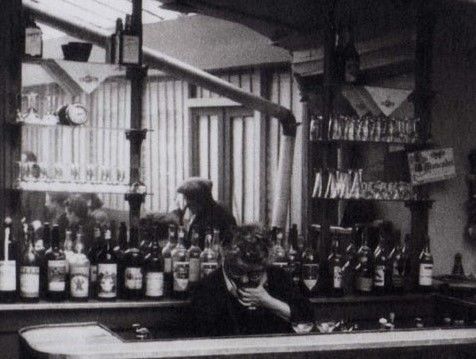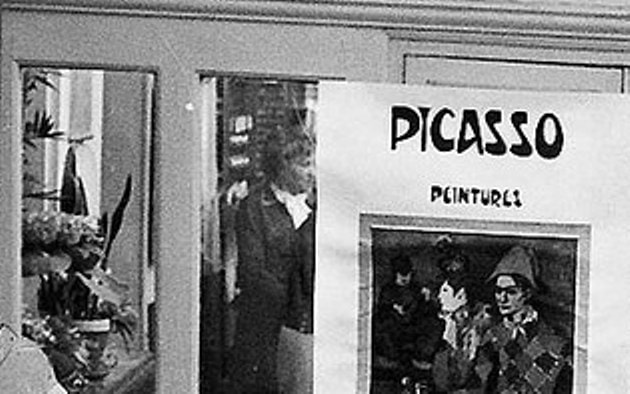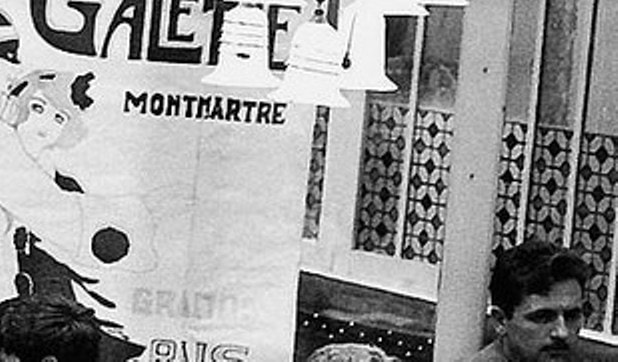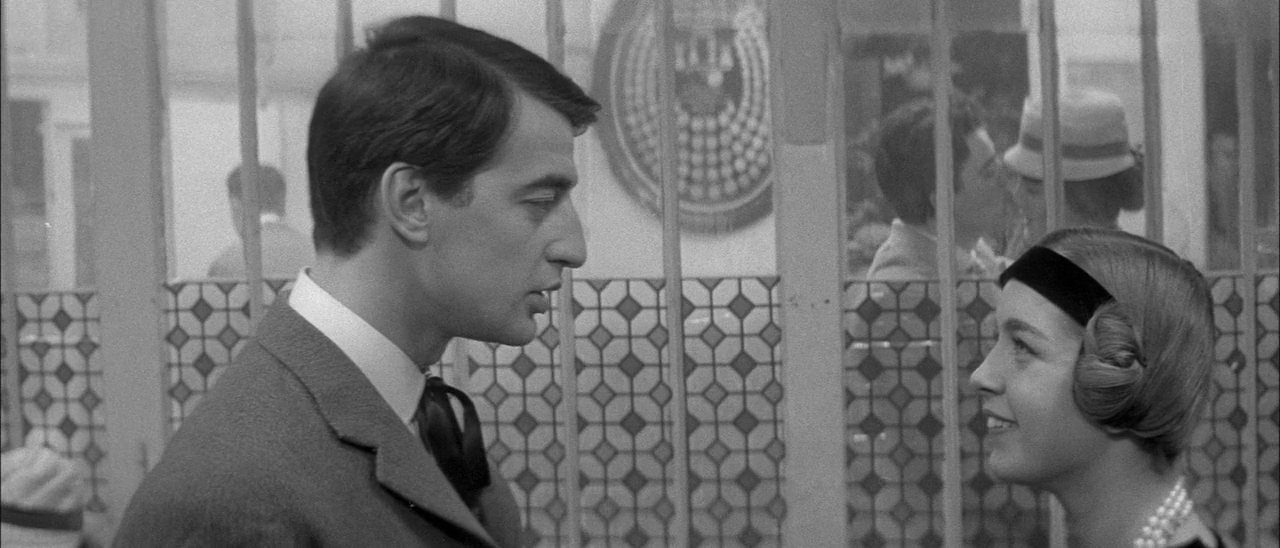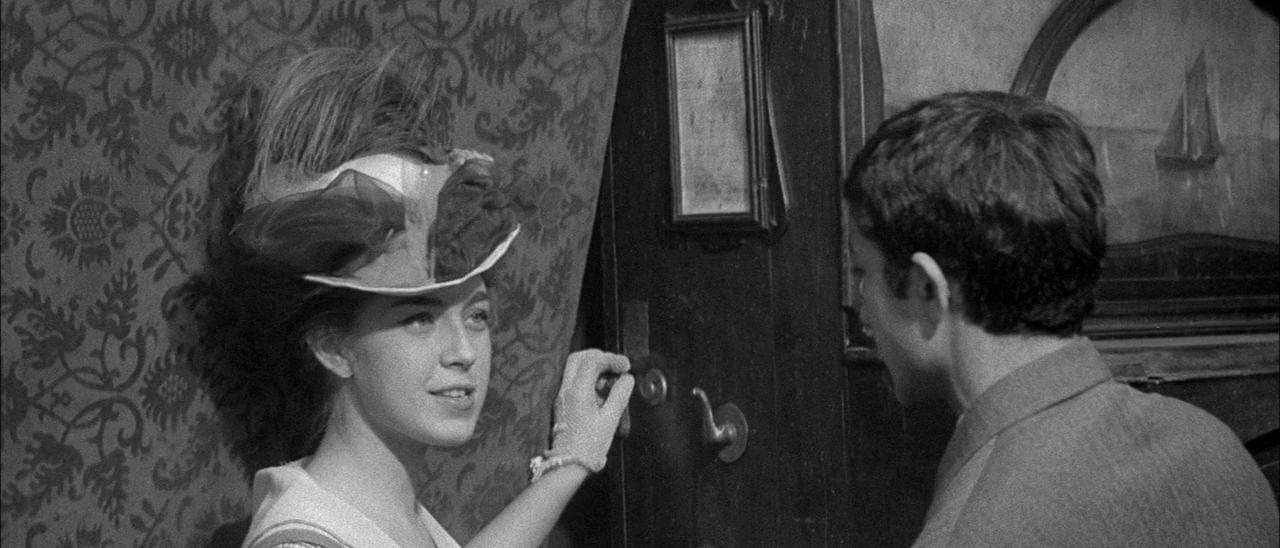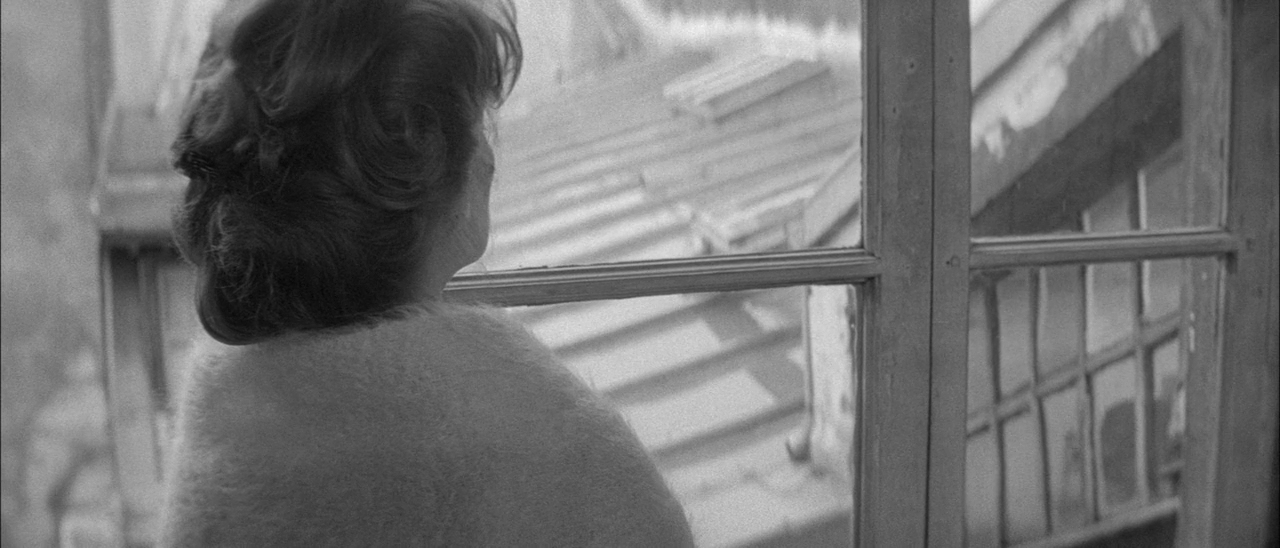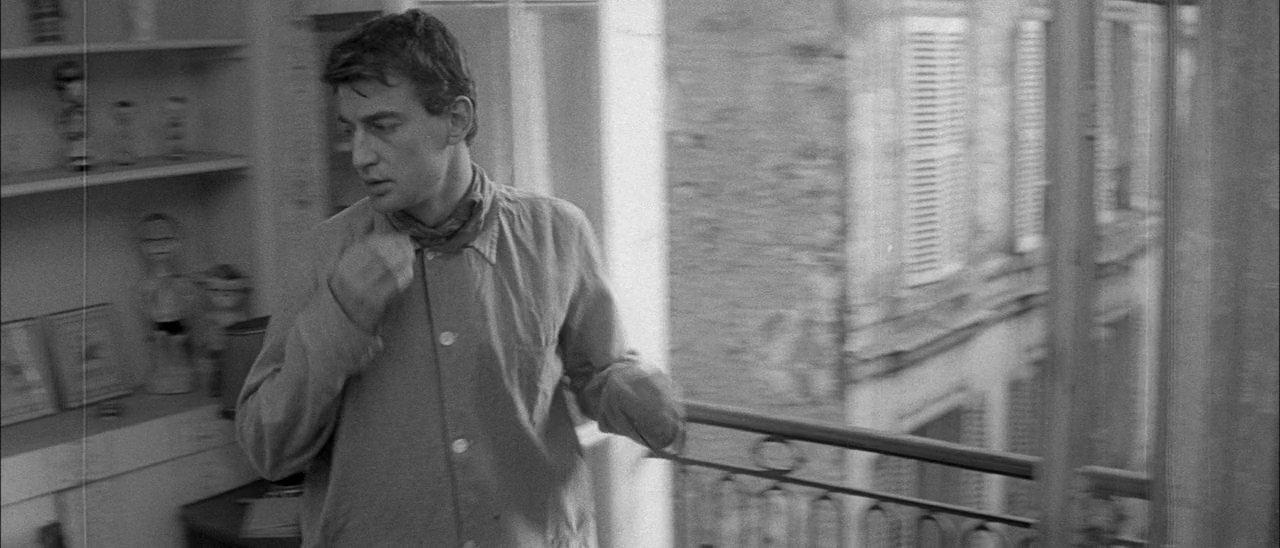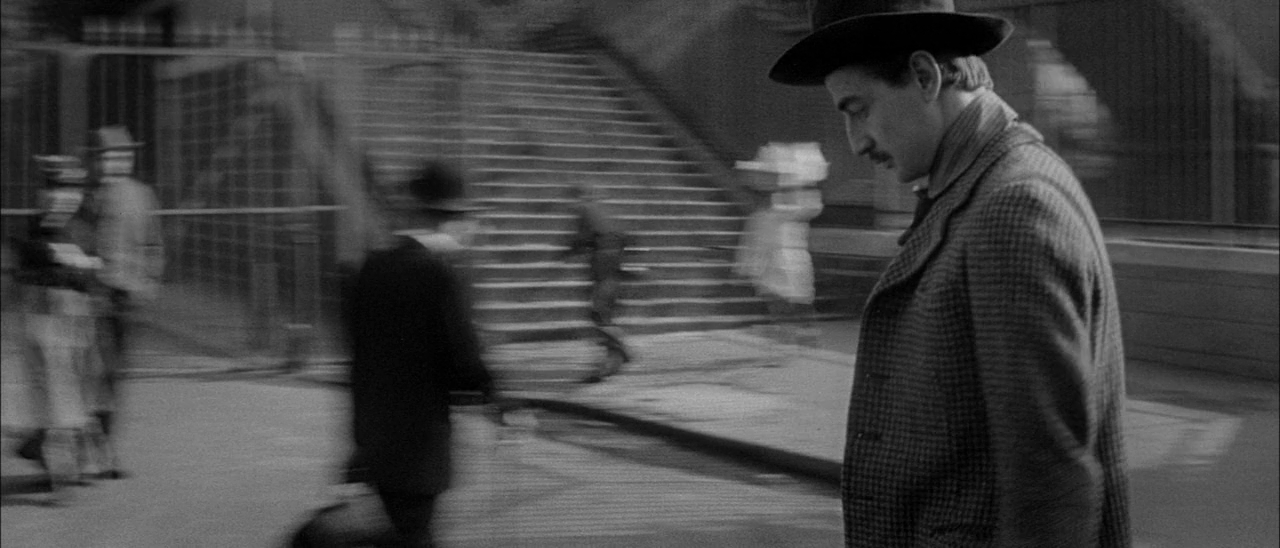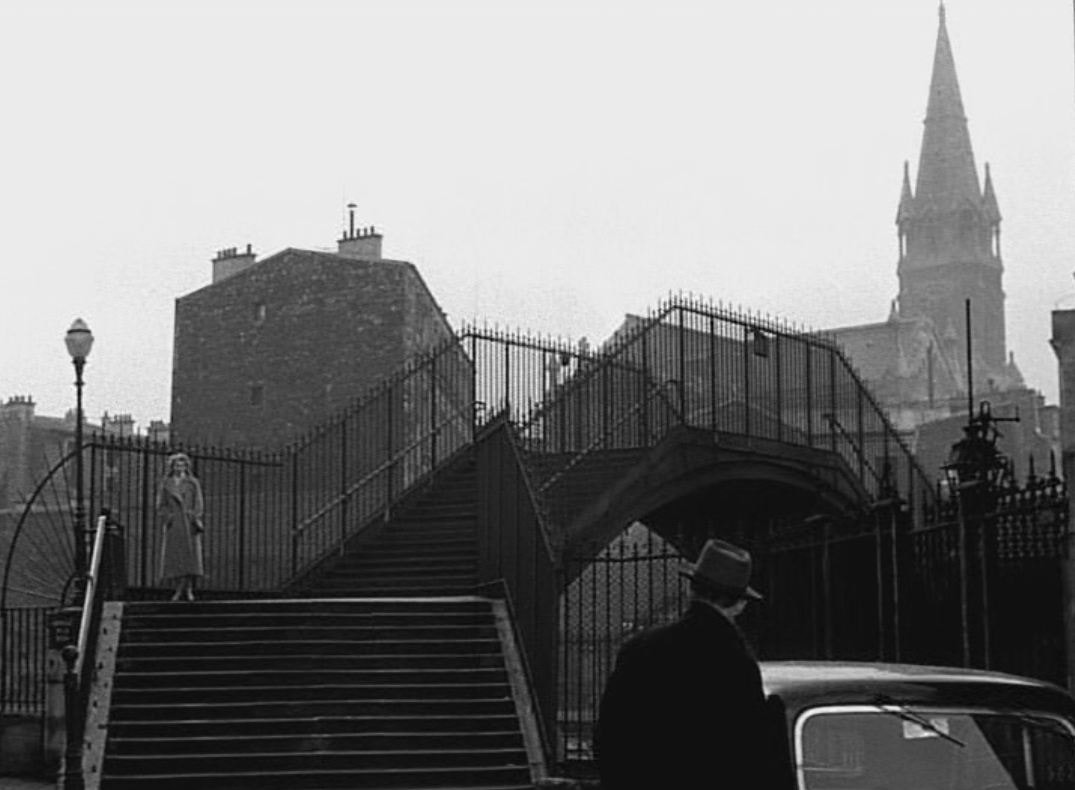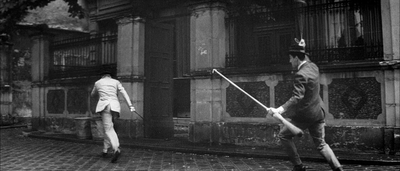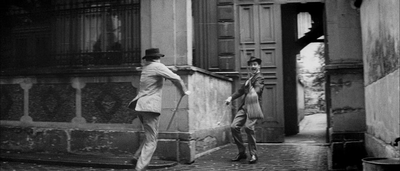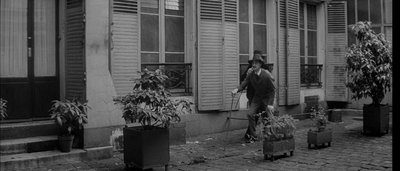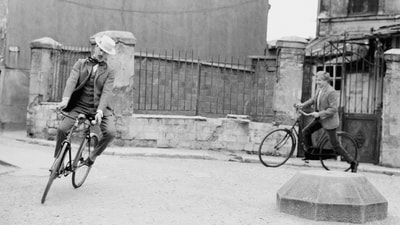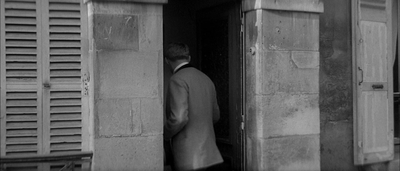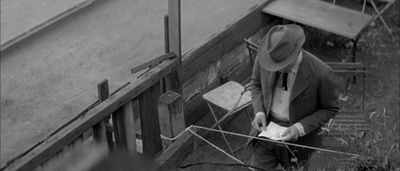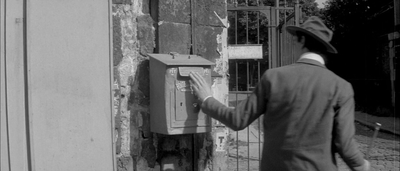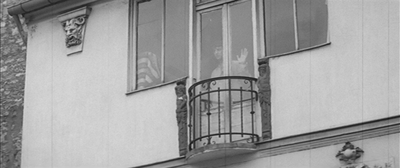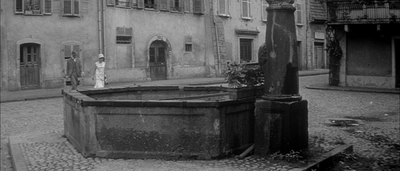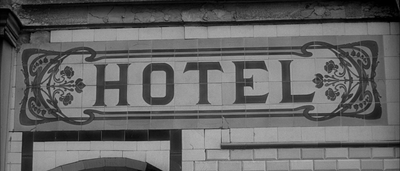Jules et Jim: Paris configured
François Truffaut's Jules et Jim (1962) is unusual among New Wave films in being set in the past (roughly 1912 to 1933), which sets unusual problems regarding how Paris is presented and represented. Similar problems were faced the next year by Claude Chabrol with Landru (set between 1914 and 1922). We could constitute a corpus of analogous past-set French films from the New Wave period by adding Georges Franju's Judex (1963) and Thomas l'imposteur (1964), Jean-Louis Richard's Mata Hari agent H21 (1964) and Louis Malle's Le Voleur (1967):
All of these films spend most of their time in interiors or in exteriors outside of Paris, minimalising the difficulties of visualising the past in a real urban environment. Jules et Jim is no different: only about 35 of the film's 105 minutes are set in Paris, and only about a third of that third is filmed in real exteriors.
The ways in which Paris is represented in the film can be sorted under four headings: archive Paris, landmark Paris, generic Paris and the Paris of interiors.
The ways in which Paris is represented in the film can be sorted under four headings: archive Paris, landmark Paris, generic Paris and the Paris of interiors.
Archive Paris
Archive images of Paris are used in the film as markers of transition to the city from elsewhere. Two fragments of footage are used to show we are back in Paris after the excursion to an island in the Adriatic:
The first of these is a view from the overhead métro on the boulevard de Grenelle; the second is a view of the overhead métro on the boulevard de la Villette.
Straightway after Catherine says 'I miss Paris, let's go back to Paris, please... Tomorrow night we'll be in Paris', a view of the Gare de Lyon tells us that they have returned from the south of France:
Straightway after Catherine says 'I miss Paris, let's go back to Paris, please... Tomorrow night we'll be in Paris', a view of the Gare de Lyon tells us that they have returned from the south of France:
After Jim and Catherine have spent the night in a hotel, views from and of the Eiffel Tower tell us that Jim has returned to Paris:
The second of these views looks like it's from a métro train on the Pont de Bir-Hakeim. The shot continues until a cut as the camera passes close to a building, which is followed by a close up of a very famous building at 29 avenue Rapp (c. 1900, architect Jules Lavirotte):
After 91 minutes, three views from the front of a métro train turn out to be indications that Jules has come to Paris:
These views are harder to localise.
These nine fragments of archive material all come from Nicole Vedrès's 1947 documentary Paris Mil Neuf Cent: Chronique de 1900 à 1914, produced by Pierre Braunberger (his company Les Films de la Pléiade is thanked in the credits). A further six images come from this source:
The other archive material relates to the First World War and was supplied by the French Army's cinema section. Paris is in two shots from this source, showing celebrations after the armistice:
Landmark Paris
Most of the images of landmark Paris come via the found material already discussed, but there are three scenes staged by Truffaut in unique and recognisable Paris locations. The first is the nocturnal stroll by the Seine that ends with Catherine jumping in:
Though one stretch of Paris riverside can look much like another, the distinctive aspects of this particular location are the bridge they pass under, the Pont au Double, and the Pont de l'Archevêché beyond:
The aspect of the quais has changed little since 1912, with very few traces of modernisation, so they are evidently ideal for the setting of a period film. For spectators in 1962, especially those keeping up with New Wave output, this is also a modern setting, used by Eric Rohmer in Le Signe du Lion (just released though made in 1959):
The recognisability of the second landmark location comes in part from its unchanged aspect but chiefly from the readability of its name:
Inaugurated under this name in 1926, it was Paris's first and remains its most famous arthouse cinema. Its preserved façade is, along with that of the nearby Panthéon and the Studio 28 in Montmartre, one of the few to have survived intact since the 1920s. The exterior is immediately recognisable, though the views of the interior are generic:
(I'm assuming the auditorium is that of the Studio des Ursulines, though this same year in Vivre sa vie Godard combined the exterior of the Jeanne d'Arc cinema and the interior of the Panthéon as if they were one place (see here), so it is wise to be wary.)
Truffaut dresses the foyer of the Studio des Ursulines to fit the late 1920s, with a still from The Gold Rush (1925), a poster for Un chien andalou (1929) and the cover of the first issue of the journal Du Cinéma (December 1928):
Du cinéma became La Revue du cinéma in 1929 and in November of that year published the scenario of Un chien andalou. The film opened at this cinema in June 1929 and, though its first long run was at the Studio 28 later that year, the film was always associated with the Studio des Ursulines. It was playing there again in 1962, as we can see from a poster glimpsed in Varda's Cléo de 5 à 7:
The supposed date of the cinema sequence of Jules et Jim is February 1933, since as they leave we hear the Pathé Journal speaker introducing the teams for the football match between France and Austria that took place on the 12th of that month at the Parc des Princes (Austria won 4-0). The marking of period is not overly consistent, however, since among the posters on the hoarding across the street is one for Baudou bicycle tyres that dates from 1910, and was not likely to be still in use twenty years later:
Truffaut is able to point the camera out from the foyer because across the street is only a hoarding in front of ongoing demolition work - a sign for 'Saussier, entreprise de démolitions' is readable among the period posters. Two years later that shot would not have been possible, after the erection of a seven-storey apartment building:
The last sight of landmark Paris in Jules et Jim is the last sequence of the film, when Jules places the ashes of Jim and Catherine in the columbarium at the Père Lachaise cemetery:
Here again is a location of generally unchanging aspect, though passing as the 1930s is more difficult when it is possible to read, on niches in the columbarium, dates of decease in the 1950s.
The Père Lachaise cemetery is famous and distinctive, though like the quais it could be seen as generic - many cemeteries in films look the same. The feature that here makes it recognisable is the long slope down which Jules walks as the film closes:
The Père Lachaise cemetery is famous and distinctive, though like the quais it could be seen as generic - many cemeteries in films look the same. The feature that here makes it recognisable is the long slope down which Jules walks as the film closes:
Generic Paris
Under this heading I class the locations that are specific and even distinctive without being recognisable, except to those for whom they are local. There are five major locations of this kind in Jules et Jim, the most distinctive of which - the footbridge on which Catherine wins a race - has become a posteriori a kind of landmark from being seen in this film:
As Patrick Six's photograph here shows, the bridge has changed considerably, so we can no longer class this location among those landmarks of consistent aspect that allow the present to pass for the past. In 1962 the bridge and its surrounding parts were generic but they brought the past into the present of the film.
This footbridge, now known as the passerelle de Valmy, is in the suburbs at Charenton-le-Pont, crossing the railway tracks between the boulevard de Saint Maurice (now avenue Winston Churchill) and the rue de l'Entrepôt. On his excellent site 'Le Paris d'autrefois' Patrick Six has thoroughly documented this and other locations for Jules et Jim. Here are some of his then-and-now images:
Locations that become cinematic landmarks live a curious afterlife in memory, where they survive more-or-less intact, even when in reality they are modified beyond recognition or when (see the Villa Ottoz below) they disappear entirely. Cinema adds to the matter for memory when in other films it remembers those locations. Sometimes that memory turns out to be a false one. The footbridge in Jules et Jim is often thought (it has been so by me) to be the same as the footbridge in Melville's Le Samourai (1967):
Sometimes it's a real memory but not a topographical one. Richard Lester's two men and a woman on a footbridge in London (The Knack 1965) are a memory of Jules et Jim, as are John Cassavetes's three men on a footbridge in New York (Husbands 1970):
A second location of this type is the house occupied by Jules at the beginning of the film:
This is one of several residences comprising the Villa Ottoz in Ménilmontant, a picturesque enclave overlooking Paris that was demolished in 1976 to make way for the Parc de Belleville. Again, the location is thoroughly documented by Patrick Six on his site.
The interior and garden scenes set here were filmed at the location:
The interior and garden scenes set here were filmed at the location:
The nearby Villa Castel, still extant (16 rue du Transvaal), is wrongly identified as this location in several places on the Internet and in Marc Lemonnier's Guide des lieux cultes du cinéma en France (2005). Robert Bober, the film's Paris location finder, certainly took photographs at the Villa Castel to show Truffaut, but if the Villa Castel does appear in the film it is in an unrecognisable glimpse.
A third generic location that is easy to recognise is the street along which Jim walks to the building where he lives:
This is the rue de la Mare in Ménilmontant, near the passerelle de la Mare, seen here at the beginning of the century and, in Franju's Judex, in 1963:
Most of the surroundings have gone but the passerelle, now classed as a 'monument historique', survives:
A fourth location in this category is the gymnasium where Jim and Jules work out:
This is an inner courtyard at 11 rue Louis-le-Grand, 2e. Here it is at the time in which the film is set:
The first is the house where Jim lives near the end of the film, seen from the outside only in a view of an upper floor:
The mascaron and the two telamons each side of the balcony would make this a place recognisable to anyone local, but haven't as yet, unfortunately, enabled me to identify it from where I am (in London). The creator of that wonderful Paris resource Mascarons de Paris doesn't recognise the building, which inclines me to think it is no longer extant. The sometimes reliable Paris vu au cinéma (M,-C. Vincent and F. de Saint-Exupéry, 2003) lists 7 rue de l'Eure, 14e, as a location for Jim's apartment, but the building there now is a recent construction and I have found no old photographs of this street to help with identification. Records show that the earlier building at this address was a 'pavillon' and sometime artists' studio, which fits with the little we see in the film, but I'm still looking for more substantial evidence.
Jim is at his window and is supposed to be looking at Catherine driving around on the square in front of the house:
This is a corner of the place Violet, 15e. If Jim's apartment did overlook this square it would be in one of these three buildings, none of which fits (the last one is a fire station):
Into this category fall those locations that are just generic fragments with too little context for the space to be specified:
These briefly glimpsed locations are given too little time to be recognised by the spectator while watching the film or to so impress the spectator that they would remember the film on seeing the location afterwards. This is just a matter of degree, and it may be, for instance, that the courtyard in which Jim and Jules duel with broomsticks is very familiar to someone:
I especially hold on to hope that someone will recognise this hotel sign, since I have been working on New Wave hotels and it is frustrating not to know this one:
Production stills sometimes provide clearer information than the film, as here, in an image from the scene where the men meet Thérèse:
The scene in the film is too dark, the shots too short or too closely framed and the camera movements too quick for the apprehension of useful detail. Cauchetier's photograph tells us that the house number is 10. Suzanne Schiffmann's commentary on the Criterion edition of the film tells us that this was filmed near the Butte-aux-Cailles. A process of elimination reveal this to be the passage Boiton, 13e:
Interiors
Even if we might, for instance, distinguish between urban and rural décor, generic interiors tend not to be localisable to a specific city. Cafés are an exception, and there are three café-settings in Jules et Jim that are clearly meant to be Parisian:
The second of these settings - seen here in Cauchetier's production still - uses posters and newspapers to situate the location in time; the 'Je vous dit "merde"' headline of La Guerre Sociale is from July 1912:
The posters are also markers of place, not just of Paris but more exactly somewhere in the Pigalle-Montmartre area: the Picasso exhibition is at Vollard's gallery at 6 rue Laffitte, 9e; the Moulin de la Galette was on the rue Lepic, 18e. They are less effective as markers of time, since there wasn't (as far as I can tell) a Picasso show at Vollard's after 1910, and the Moulin de la Galette poster is for a Mardi-Gras ball, conflicting with the July date of La Guerre Sociale. There is another poster on the street in front of the café:
This same poster had already appeared in the film, on the urinal next to the footbridge at Charenton-le-Pont:
The poster announces the publication in Le Journal of Souvestre and Allain's novel Gigolo. The serialisation began in June 1913, almost a year after the supposed setting of this scene, but it is place I am preoccupied by in this post, not time. As you can see, the front of the café looks like a real space, not a studio construction. I'm not sure if the sight of passing vehicles - a horse-drawn carriage marked Driscoll & Co and a 1903 De Dion Bouton type Q (thank you IMCDB) - make the space seem more real:
But this is a real place. Robert Bober, who worked as assistant director on the film, includes information about materials required for a particular day's shoot in his book On ne peut plus dormir tranquille quand on a une fois ouvert les yeux (2010), and specifies the location as Café Victor, Impasse Compans. He also indicates that among the actors to be present is Pierre Fabre, playing a drunk man. That's him with his back to us.
Chez Victor was a bistrot-cum-guinguette in Belleville that was photographed at least twice by Willy Ronis:
There is nothing in either of these two images that exactly matches the second café setting, and there are local specialists and former residents (see here) who doubt if Chez Victor was actually a location for the film, but the information Bober gives about the shoot is very specific and, moreover, makes clear that not just one of the café scenes was to be shot here. In fact I'm certain all three were. Looking closely at the third of them, we can see a match with Ronis's photograph:
The set of switches to the left, the pipe leading from the stove and the pattern of the wall and door, reflected in the mirror, all confirm that café scene 3 was filmed Chez Victor.
We can, furthermore, match scene 3 and scene 2 by the décor. The panel of switches is visible in Cauchetier's photograph of the set, and there we also see the same pattern on the glass partition:
The evidence that the first café scene is filmed chez Victor is not visual, though I am inclined to think that the hatstands in scenes 1 and 3 match. Bober lists 'dark round tables' and a mechanical piano as props to bring to this location. The piano is Thérèse's pretext to get up and then go off with another man, and the dark table is for Jules to draw in chalk his ideal woman:
It is quite a feat to have dressed this same space to appear so different across three different scenes (the set designer was Fred Capel), though perhaps it is less impressive to have made a real space look so much like something confected in the studio.
Of the other real interiors used in the Paris scenes of Jules et Jim, the homes of Catherine and Gilberte offer glimpses through windows of an exterior, but none of these, I would think, could help to identify a location:
Mapping
A map of the Paris of Jules et Jim would have markers in the 2nd, 5th, 13th, 14th (possibly) and 15th arrondissements and in the suburbs at Charenton-le-Pont, but its highest concentration of locations would be in the 19th and 2oth. This would be a literal map of the film's urban topography, but it would not have mapped its topographical imaginary. Aside from the views of landmarks, the Paris of Jules et Jim is anonymous. There are six homes in the Paris of Jules et Jim: chez Jules, chez Jim in 1912 and then in 1933, chez Albert, chez Gilberte and chez Catherine. At no point is it specified where in Paris anyone lives. In fact, nothing names or indicates a specific place except the poster that says Montmartre in the second café scene and the sign that reads Studio des Ursulines. Every part of Paris and environs used in Jules et Jim relates to a representation of time, rather than place.
Robert Bober, writing of himself in the third person, gives an account of Truffaut's initial ideas about the film's Paris locations:
Robert Bober, writing of himself in the third person, gives an account of Truffaut's initial ideas about the film's Paris locations:
|
|
He [Bober] still had some pictures to take at the Villa Castel, he told me, and explained as we were walking that François Truffaut was getting ready to make a film which was set mainly before World War I, and had asked him to take some pictures of potential locations. The film didn't really take place in Belleville, but Robert, who had become Truffaut's assistant, explained that this neighborhood still had many sites that looked exactly as they had fifty years before. Truffaut had wanted to film in Montmartre where he grew up, Robert told me, reminding me that several scenes in The 400 Blows had been filmed there. Yet because Montmartre had been in so many films, Robert thought it had come to look like a film set, and had suggested that Truffaut consider Belleville. Which was why he was photographing the neighborhood that day.
|
In fact, in the 1950s Belleville and Ménilmontant came close to matching Montmartre in its resemblance to a film set, thanks to a spate of gangster films (Du Rififi chez les hommes, Rafles sur la ville), melodramas (La Maternelle, Sous le ciel de Paris, Les Jeux dangereux) and of course Le Ballon rouge. Avoiding the cliché may explain why in Jules et Jim the passerelle de la Mare is quickly panned past in a blur, rather than lingeringly examined as in Du rififi chez les hommes:
Very few other New Wave films went to Belleville or Ménilmontant. François Reichenbach's Un coeur gros comme ça (1961), Guy Gilles's L'Amour à la mer (1963) and Eric Rohmer 's Nadja à Paris (1964) were there briefly, and Jean Douchet's short Le Mannequin de Belleville (1962) was there entirely, and that's about it.
A map of Jules et Jim as a whole would, of course, stretch beyond Paris and its immediate suburbs to Limay (Yvelines), Ermenonville (Oise), Andé (Eure), Cernay (Haut-Rhin) and Plan de la Tour (Var). But for this post I'm only interested in Paris, so I'll end here, with some of the places I'd still like to identify:
A map of Jules et Jim as a whole would, of course, stretch beyond Paris and its immediate suburbs to Limay (Yvelines), Ermenonville (Oise), Andé (Eure), Cernay (Haut-Rhin) and Plan de la Tour (Var). But for this post I'm only interested in Paris, so I'll end here, with some of the places I'd still like to identify:
